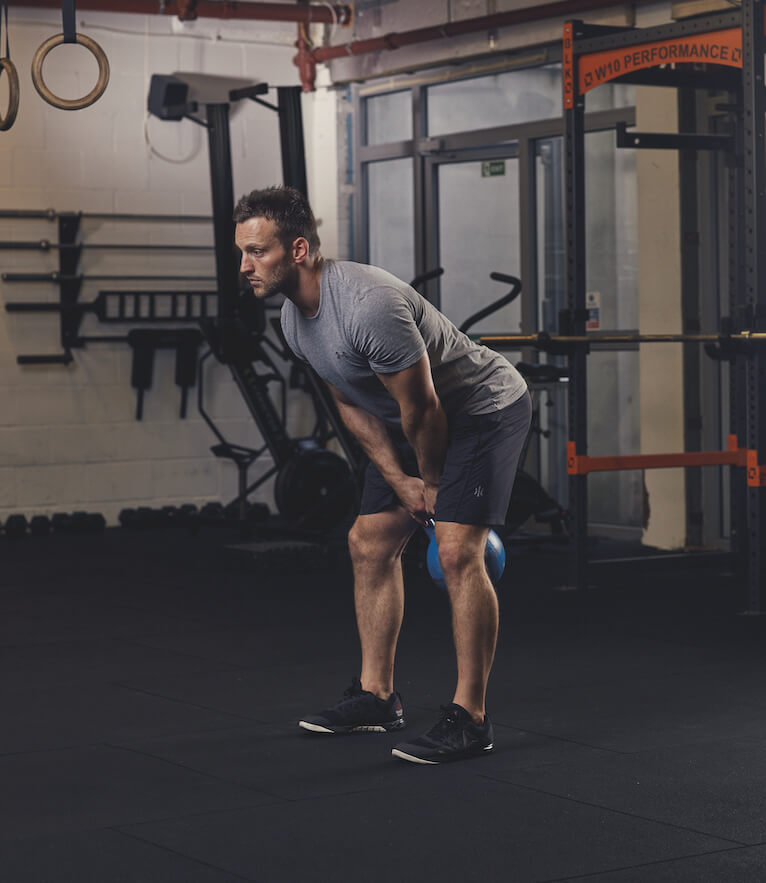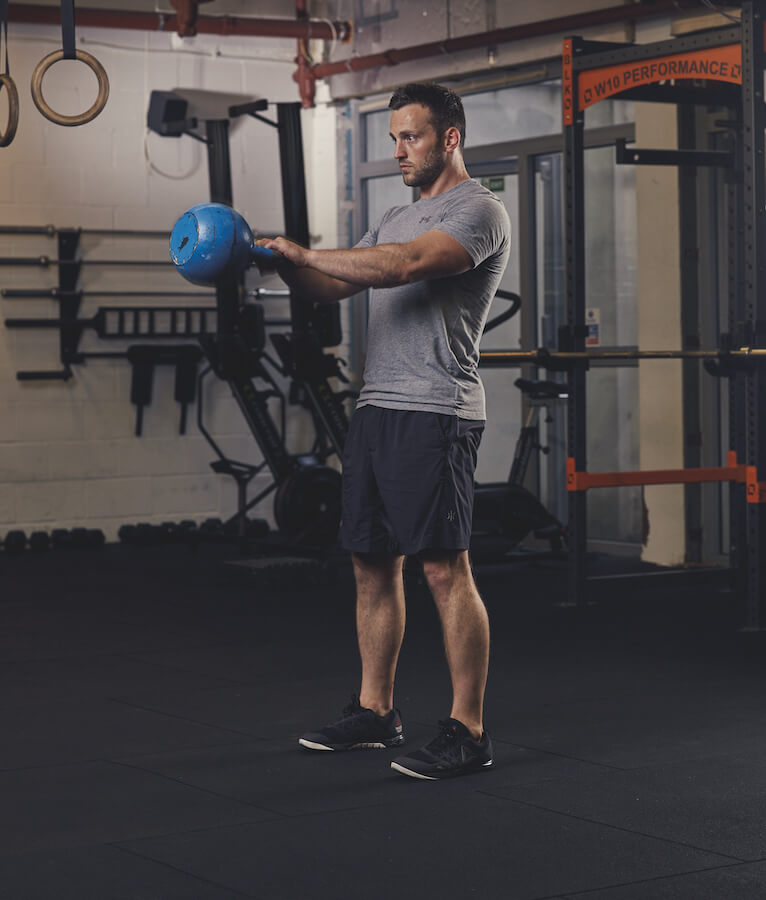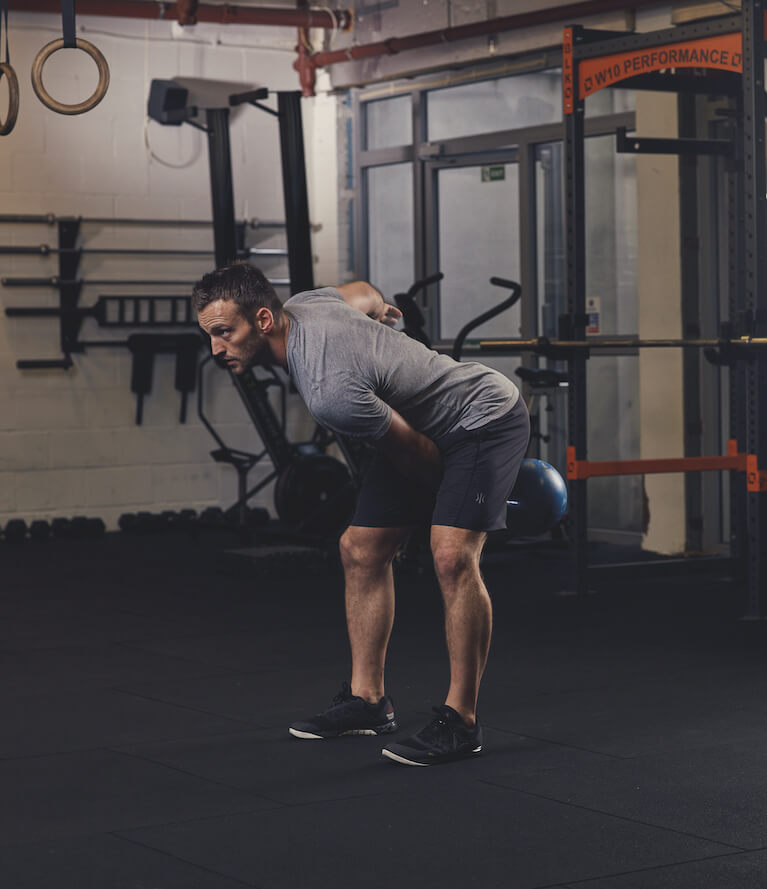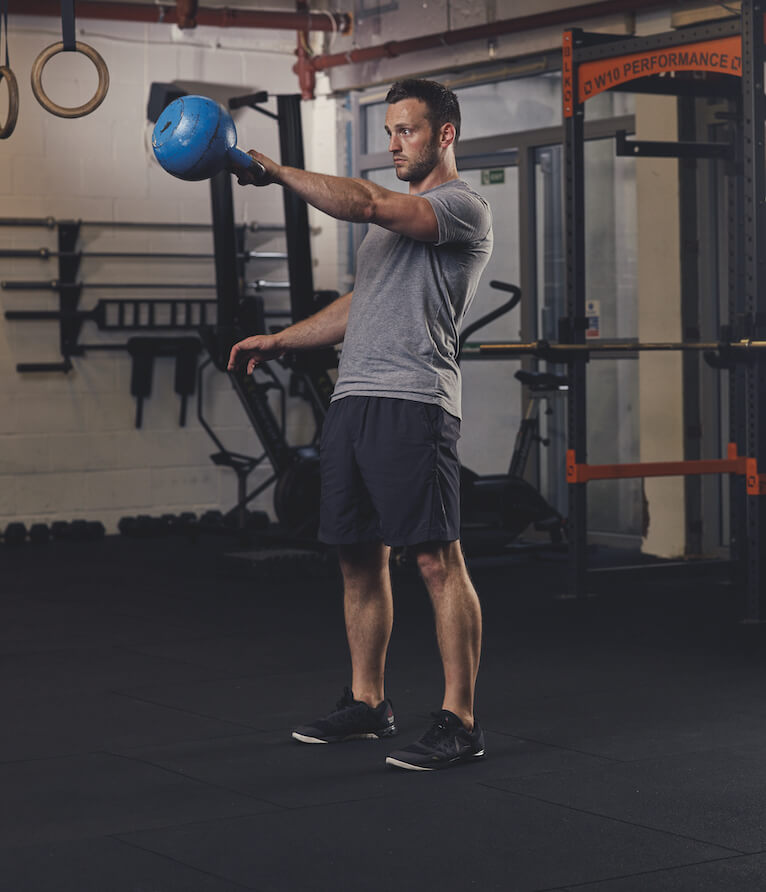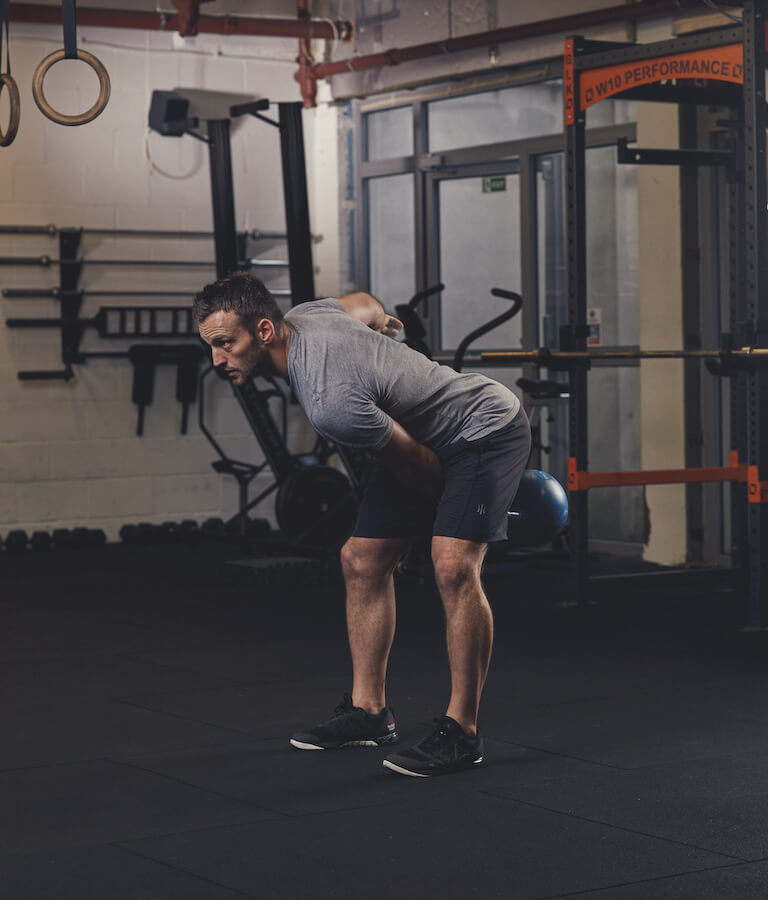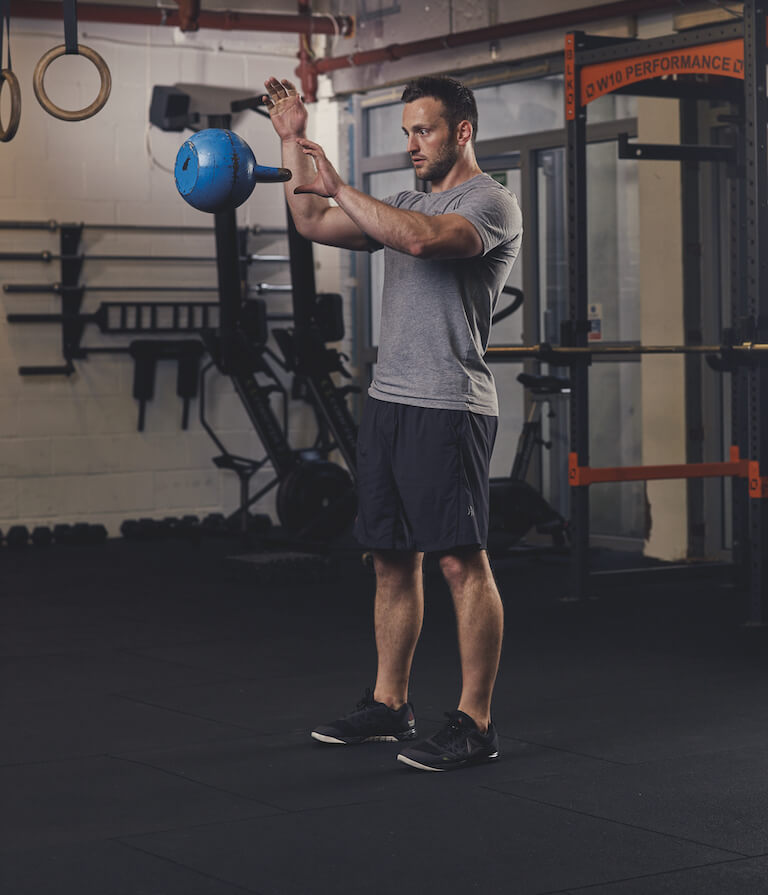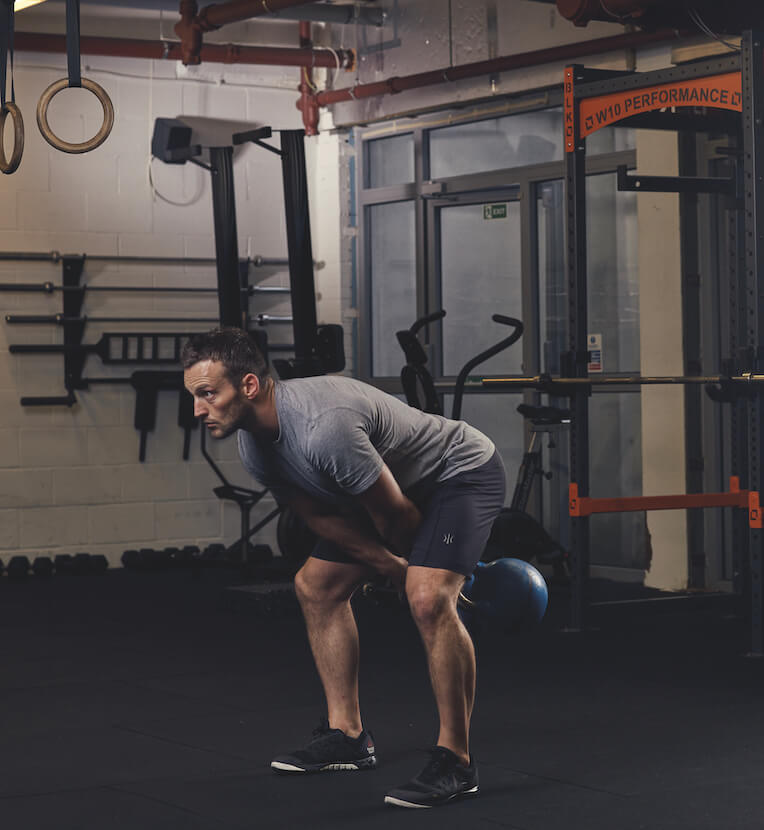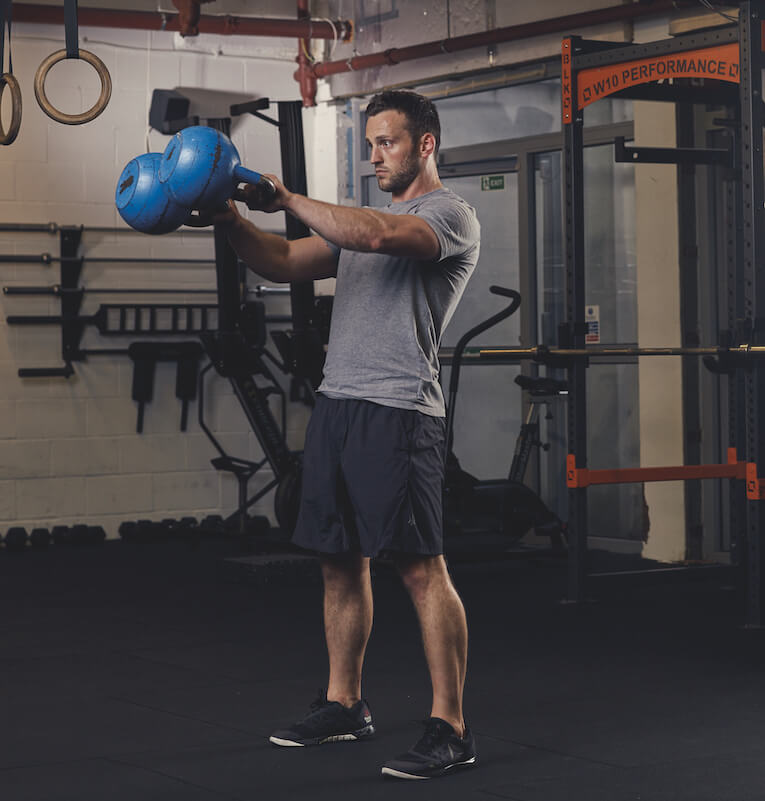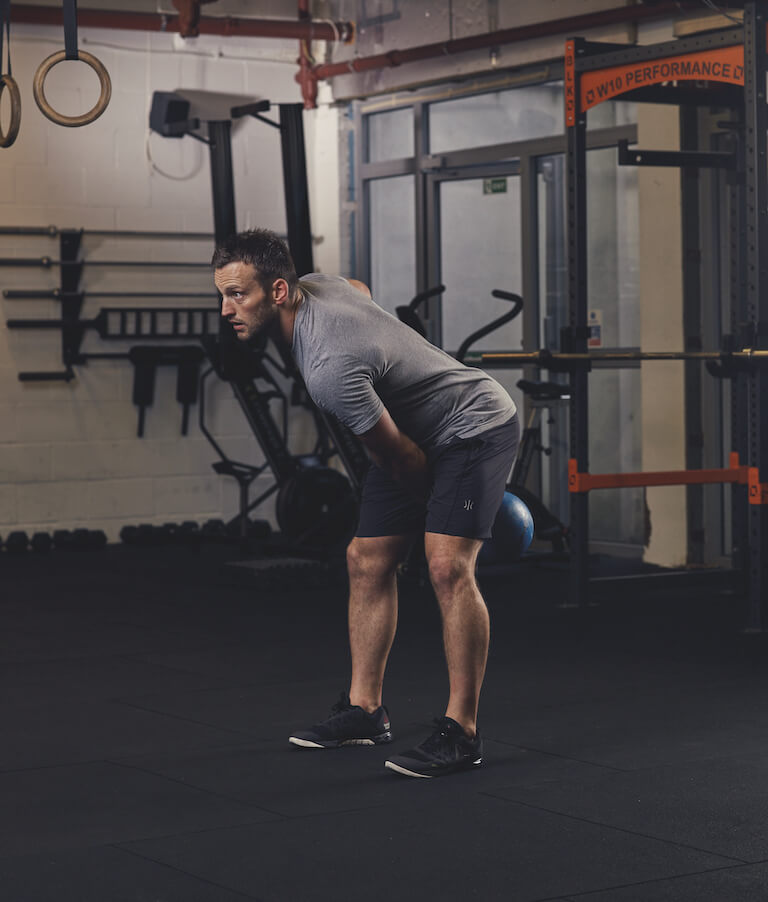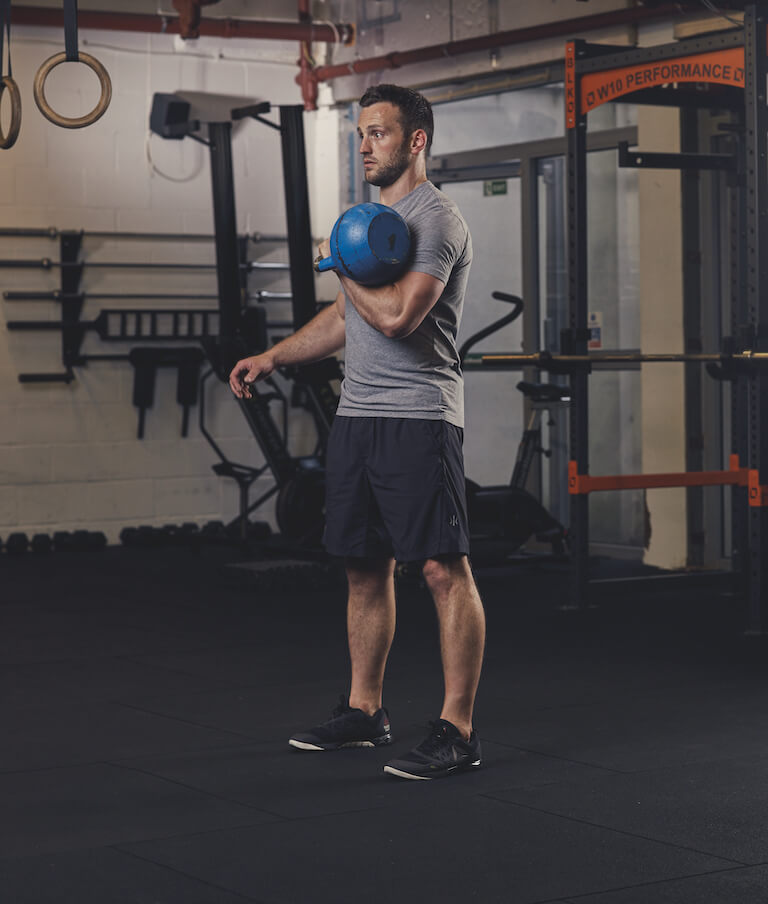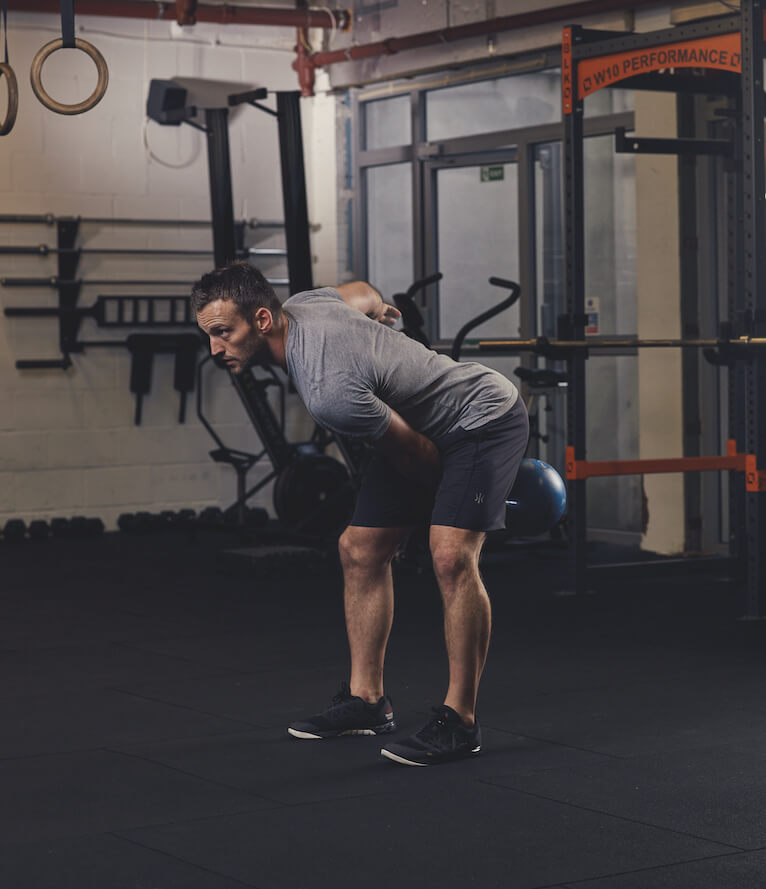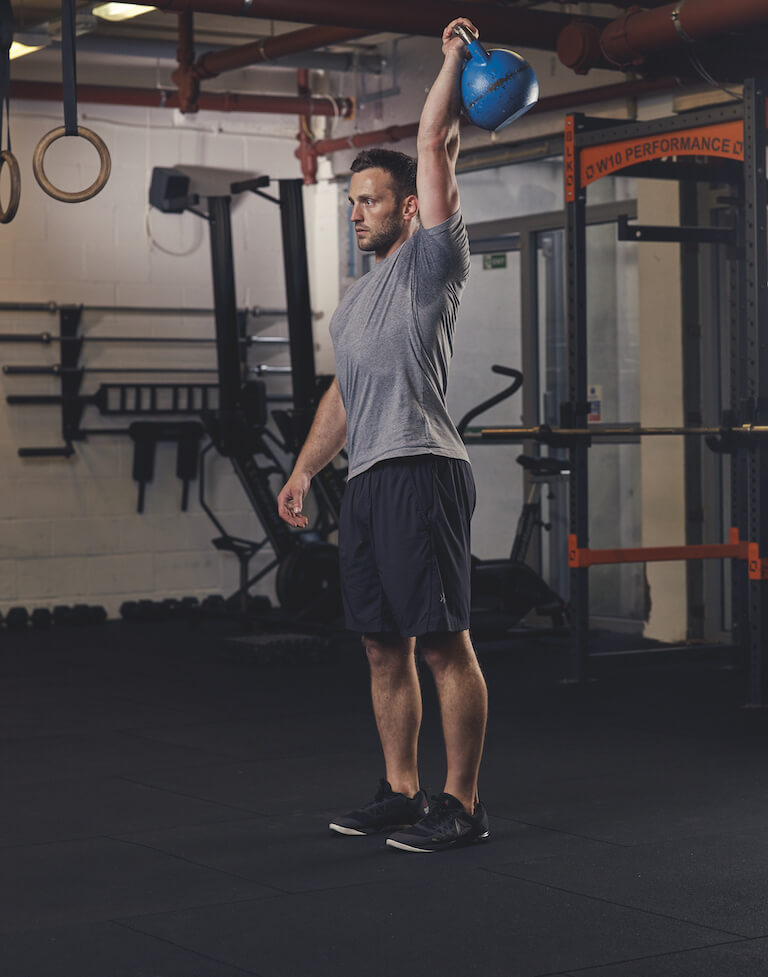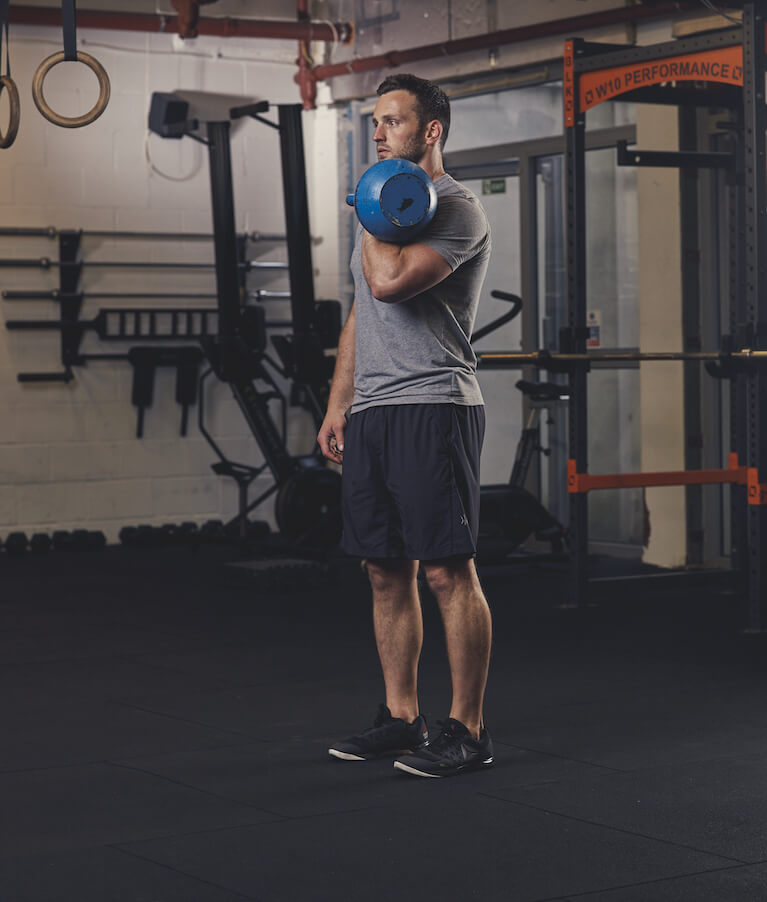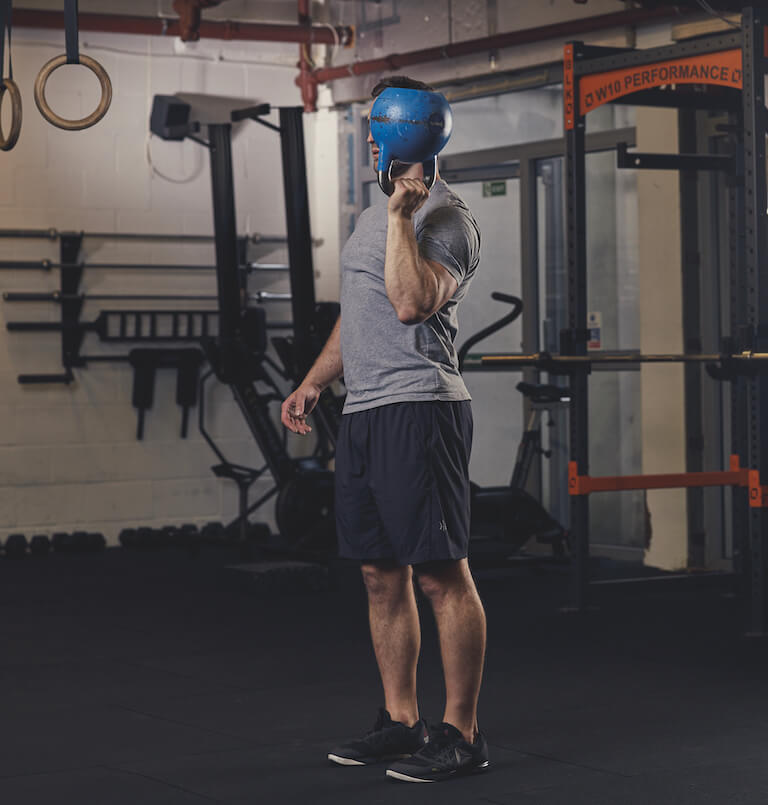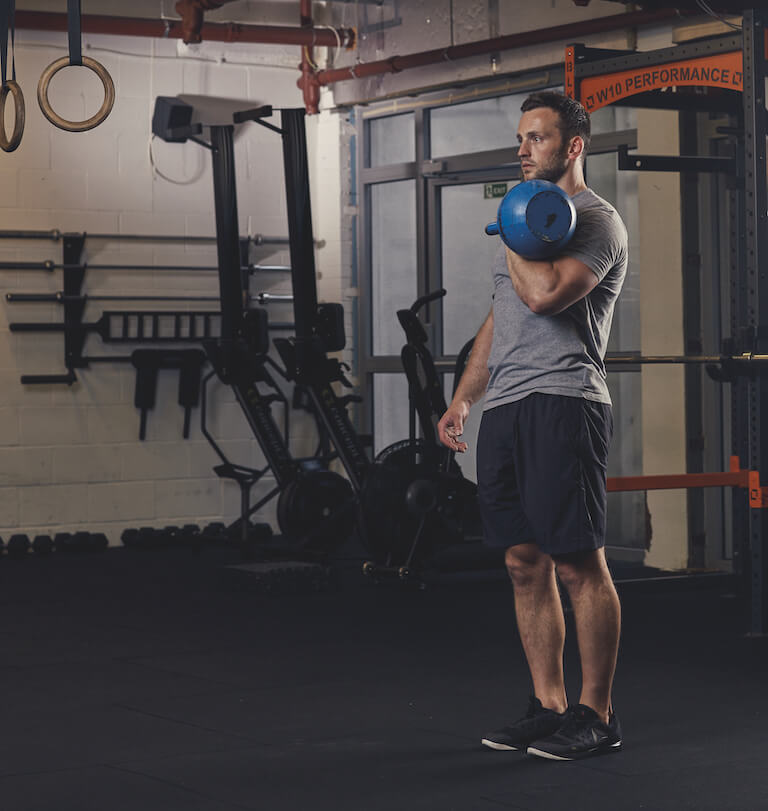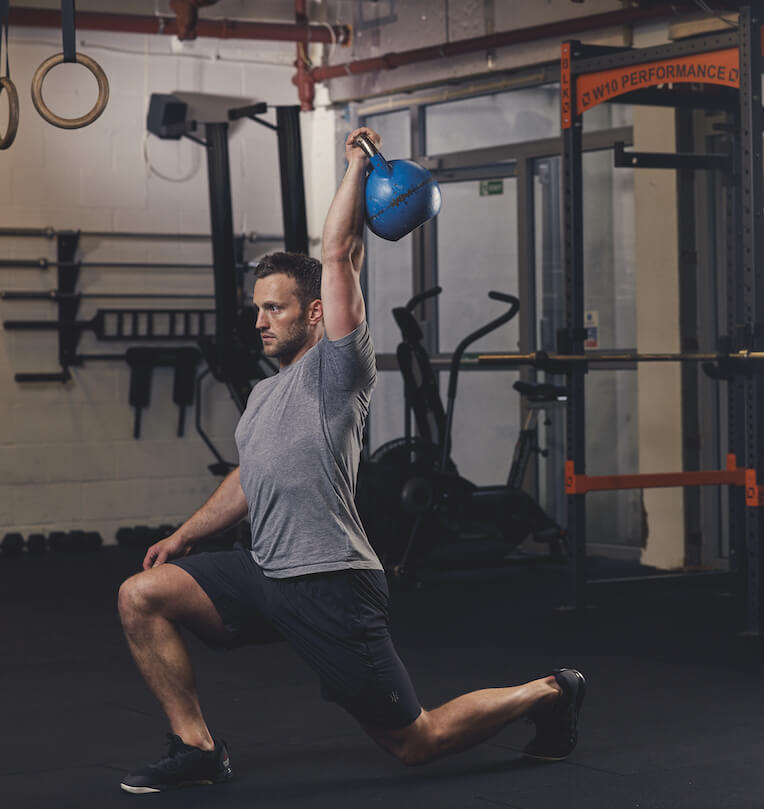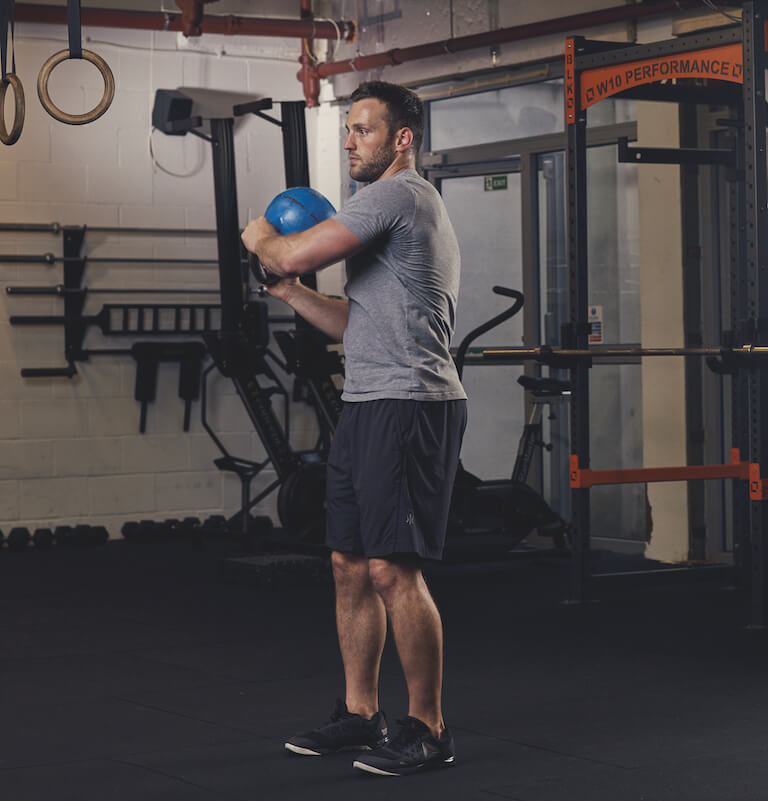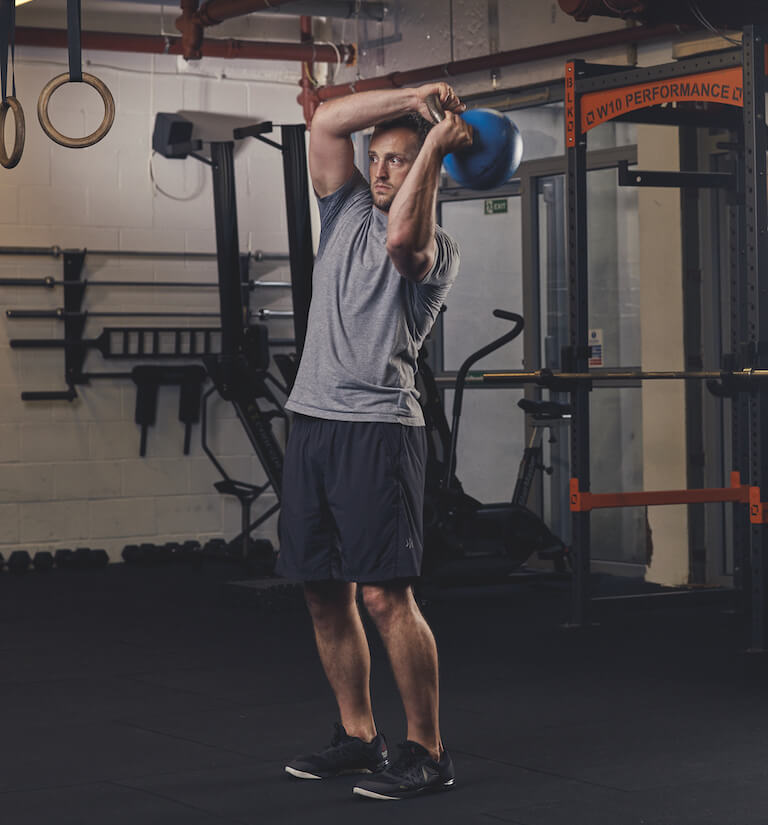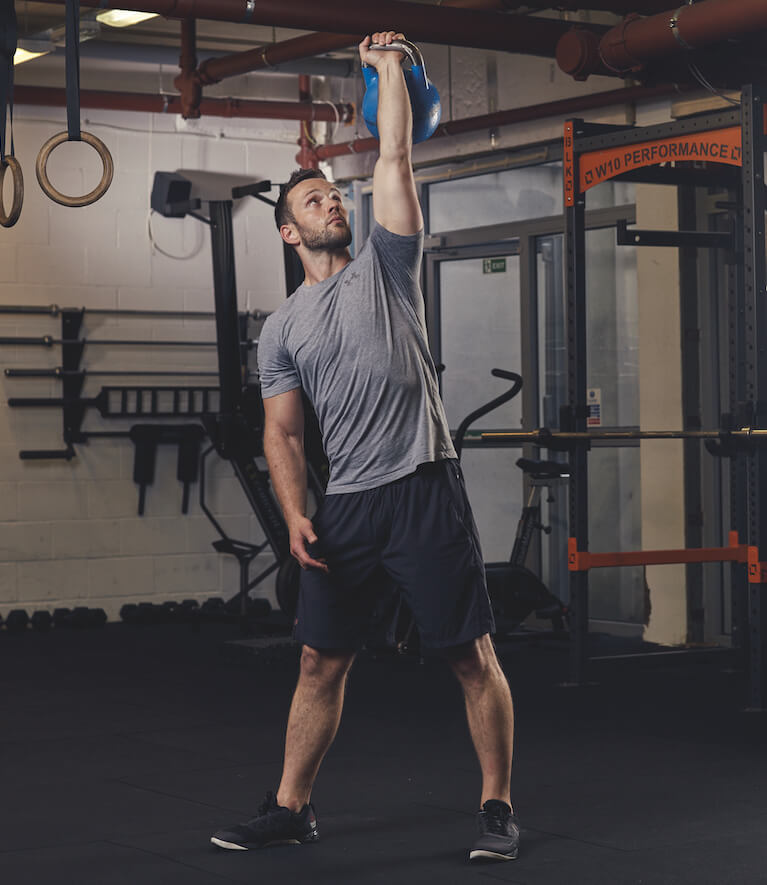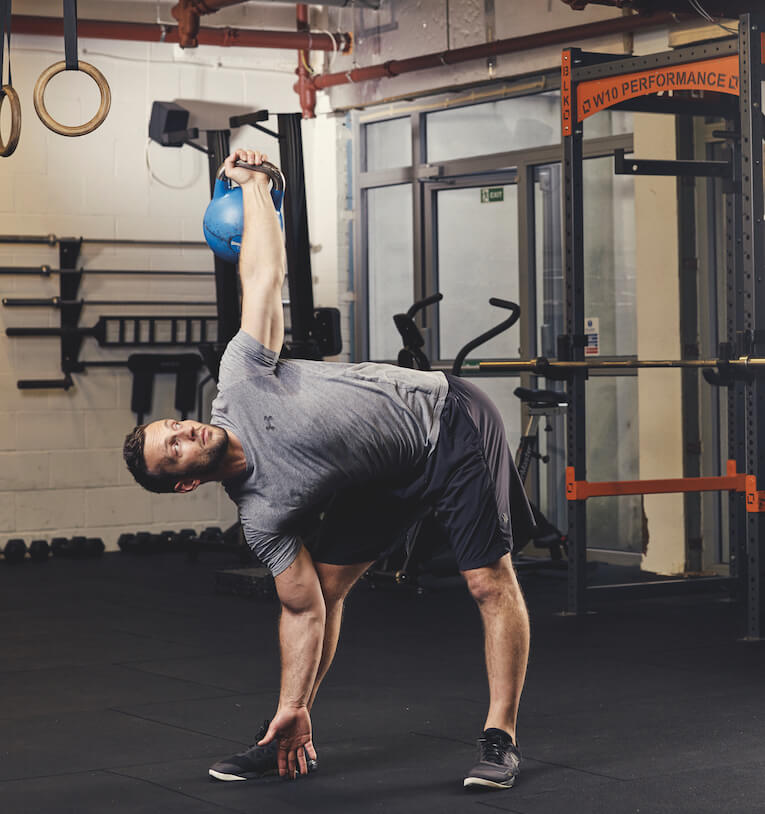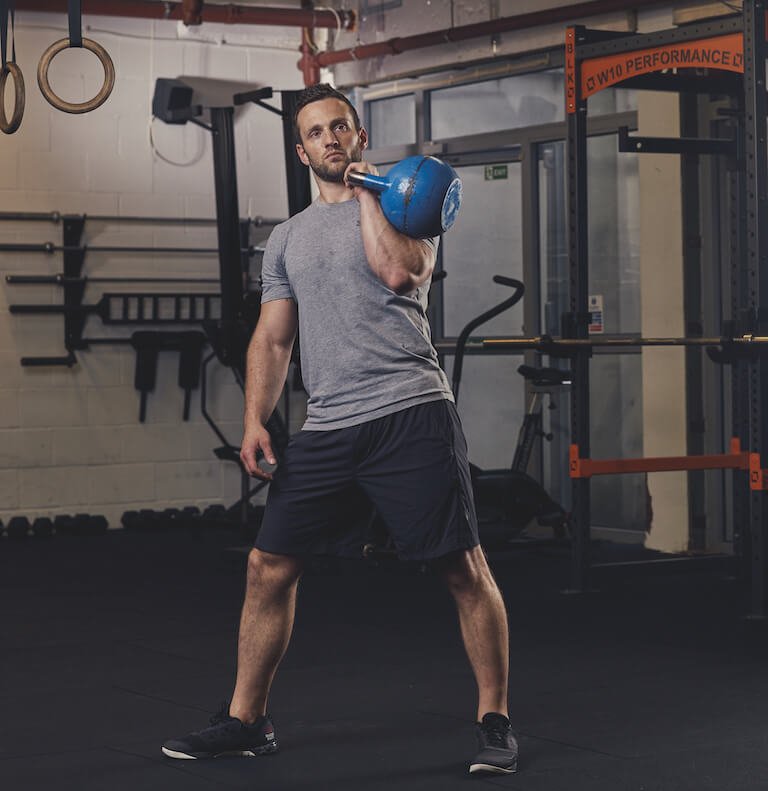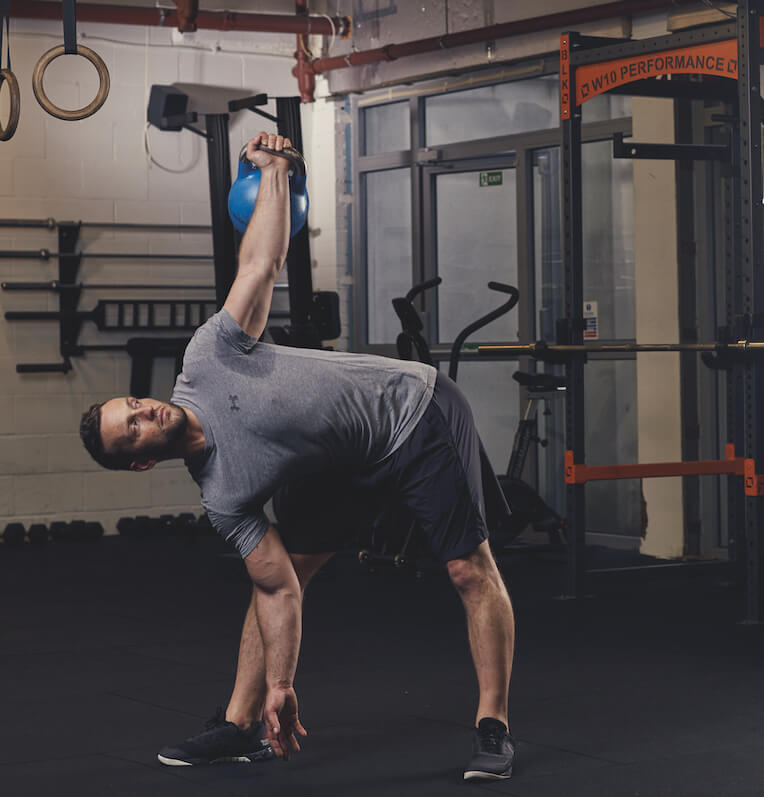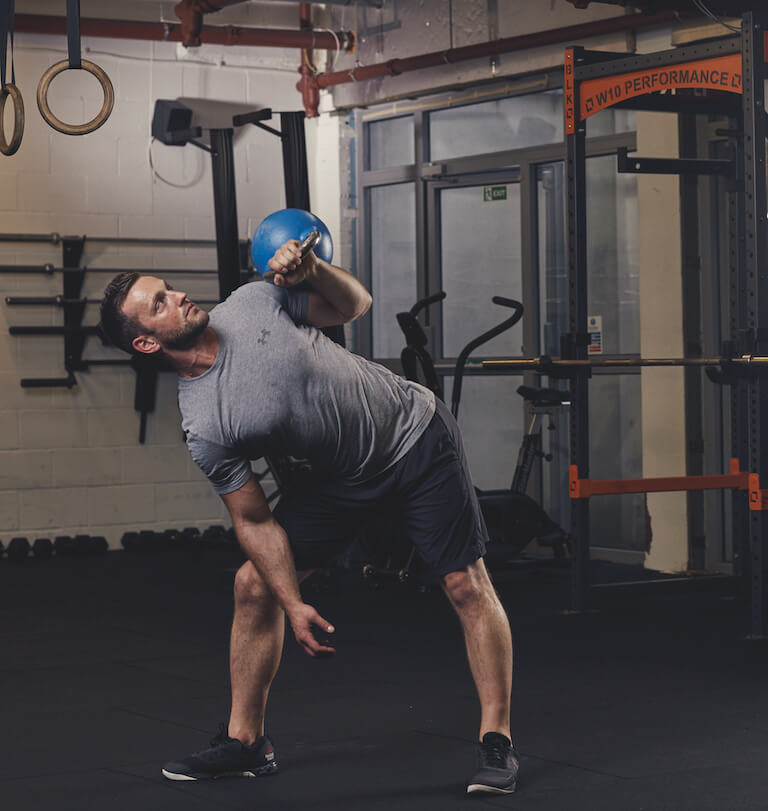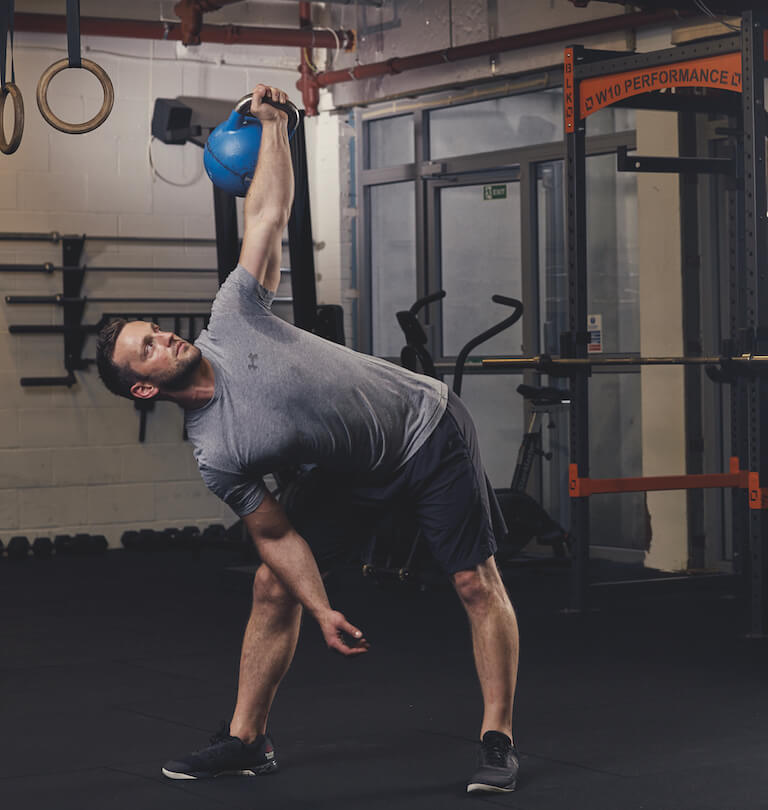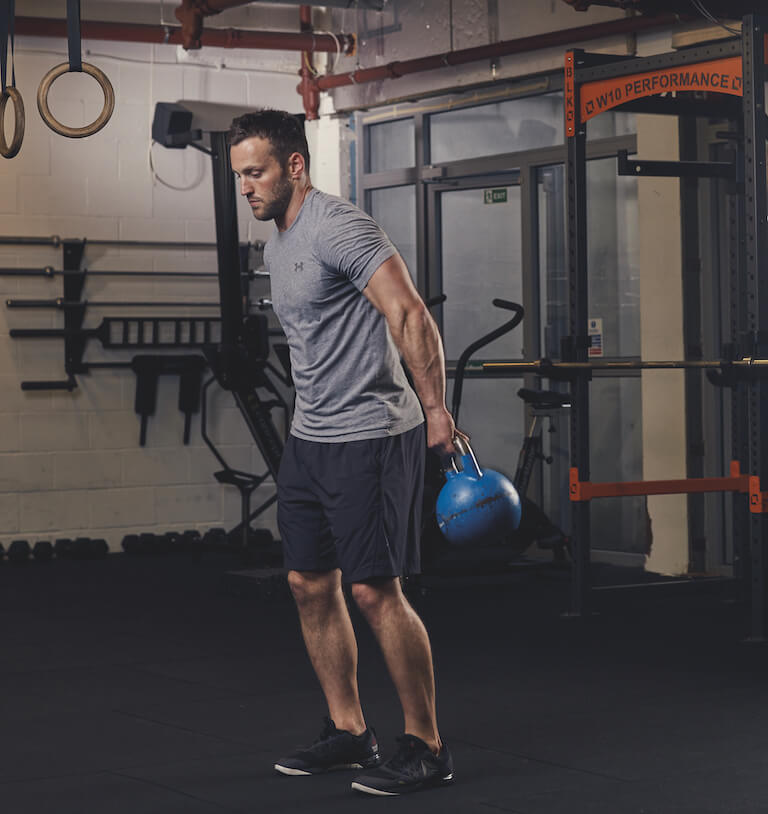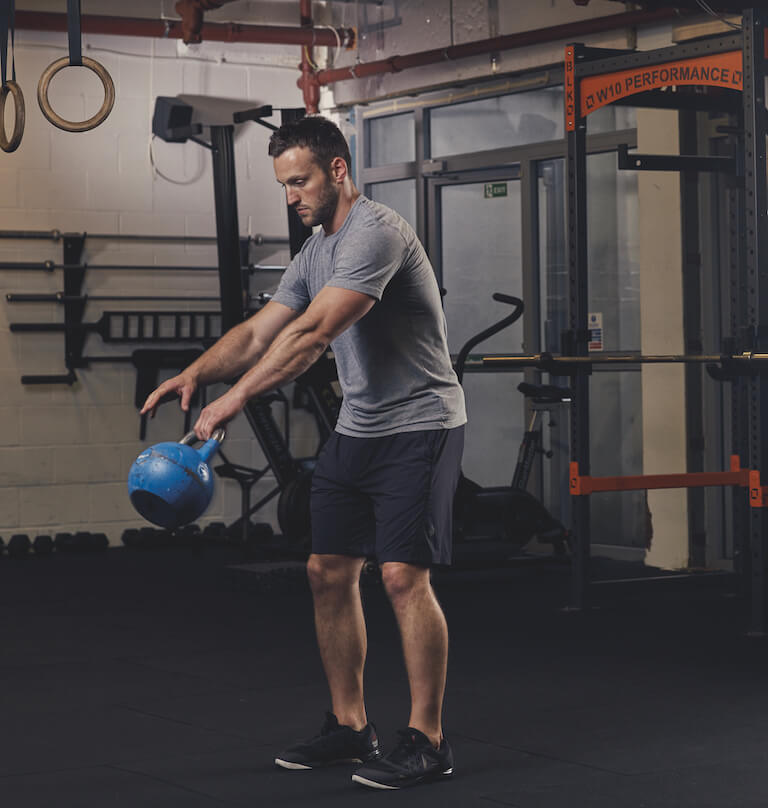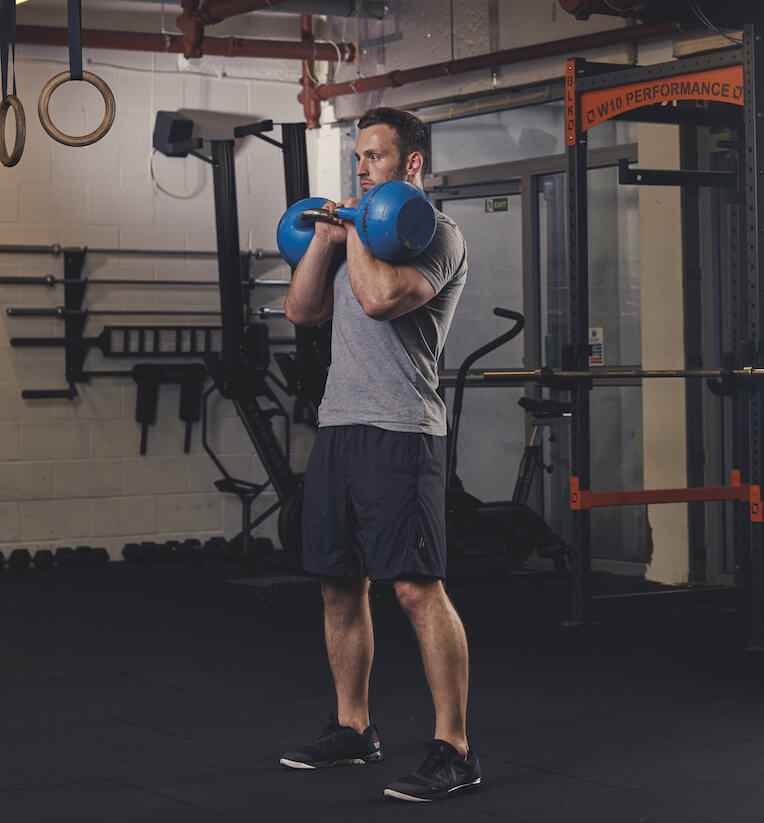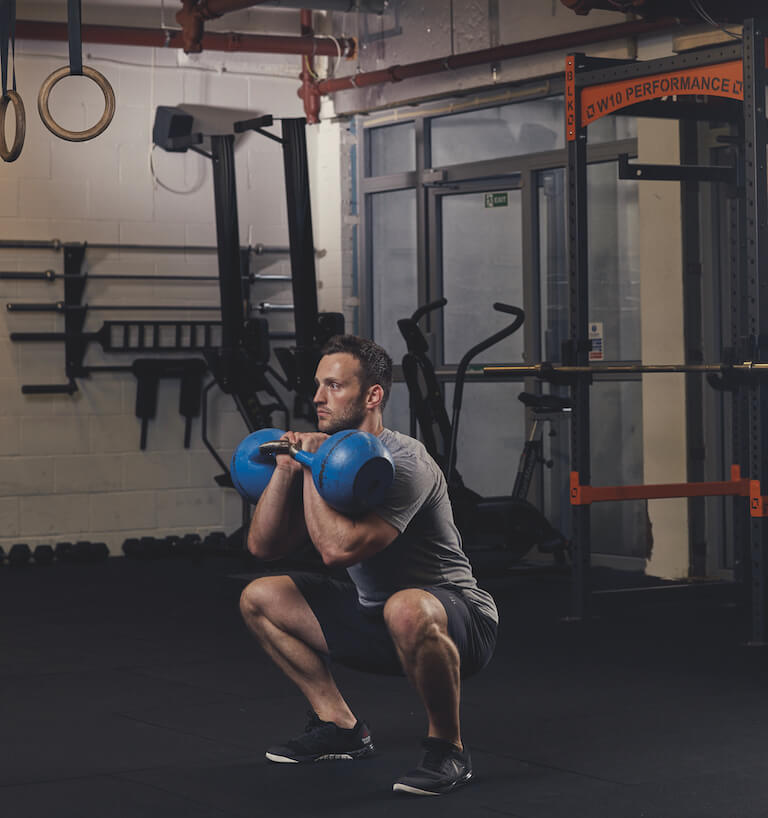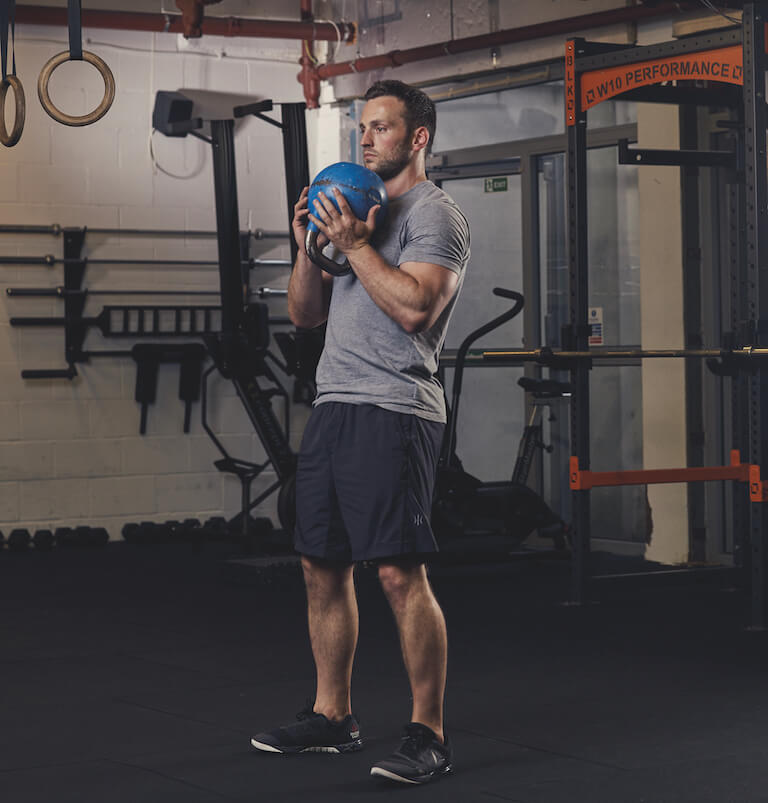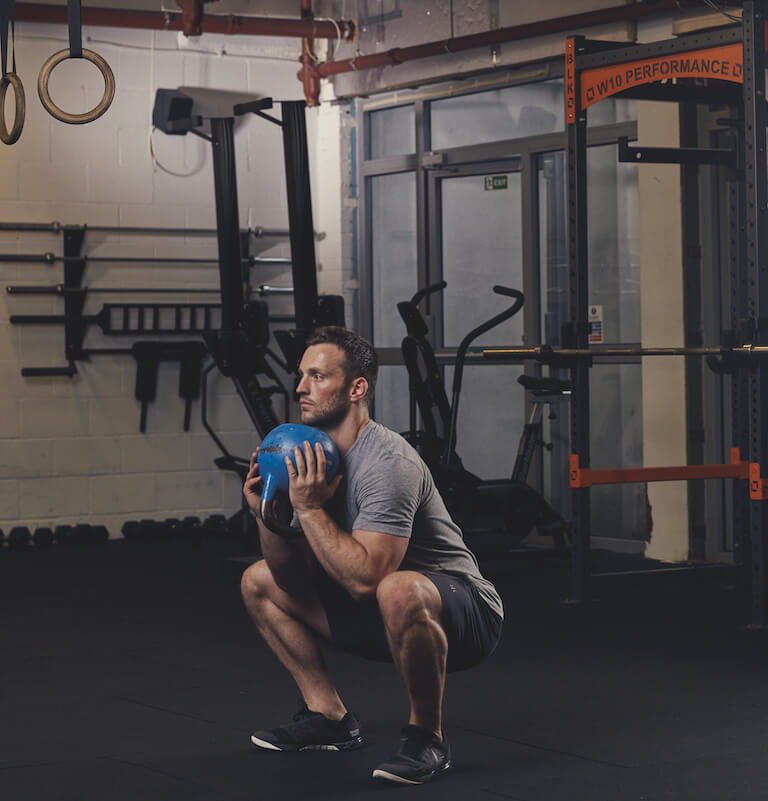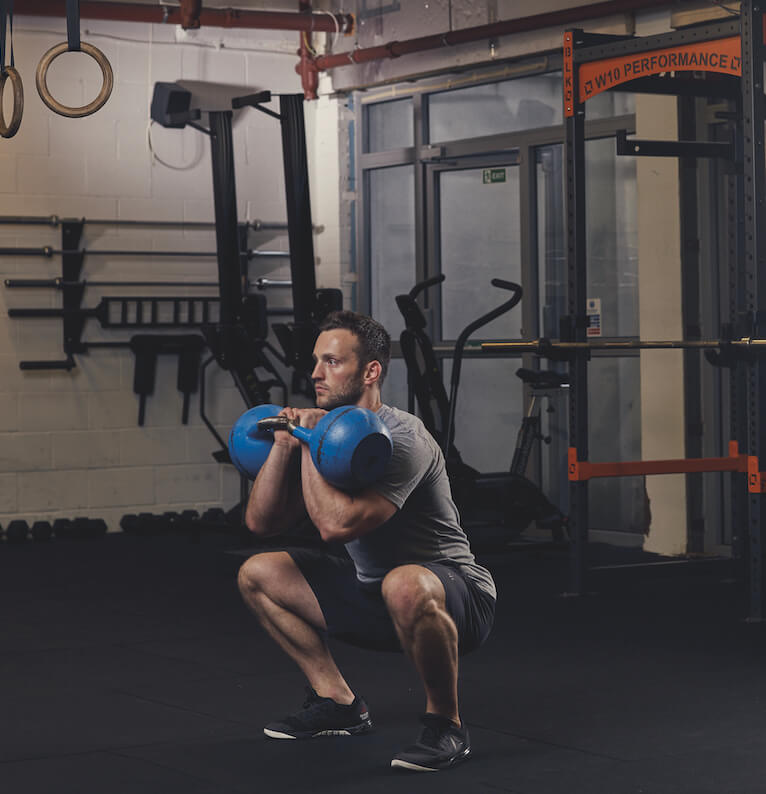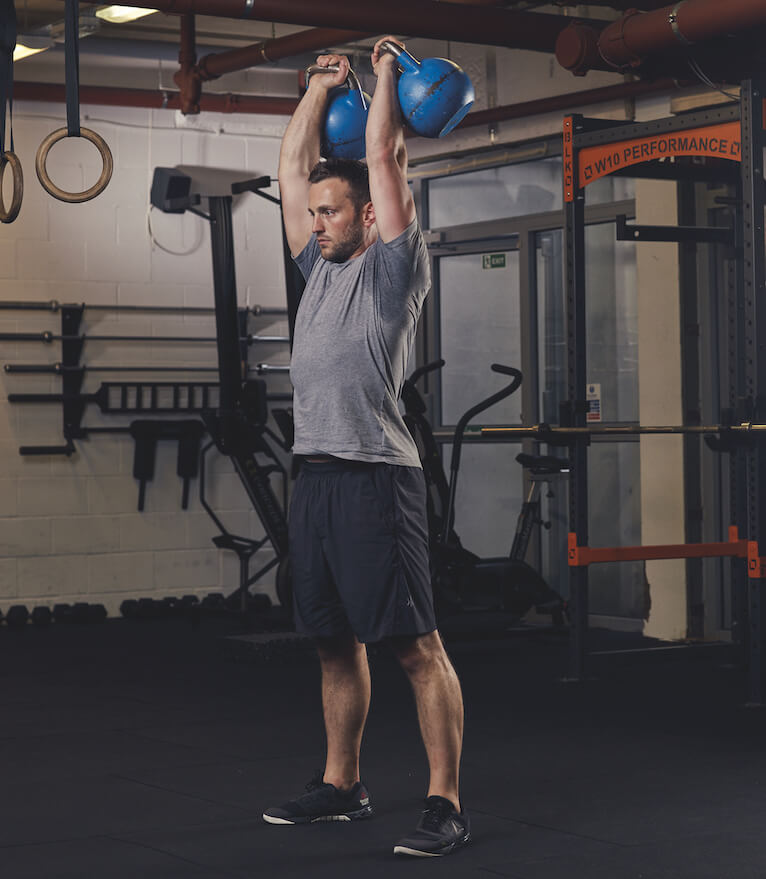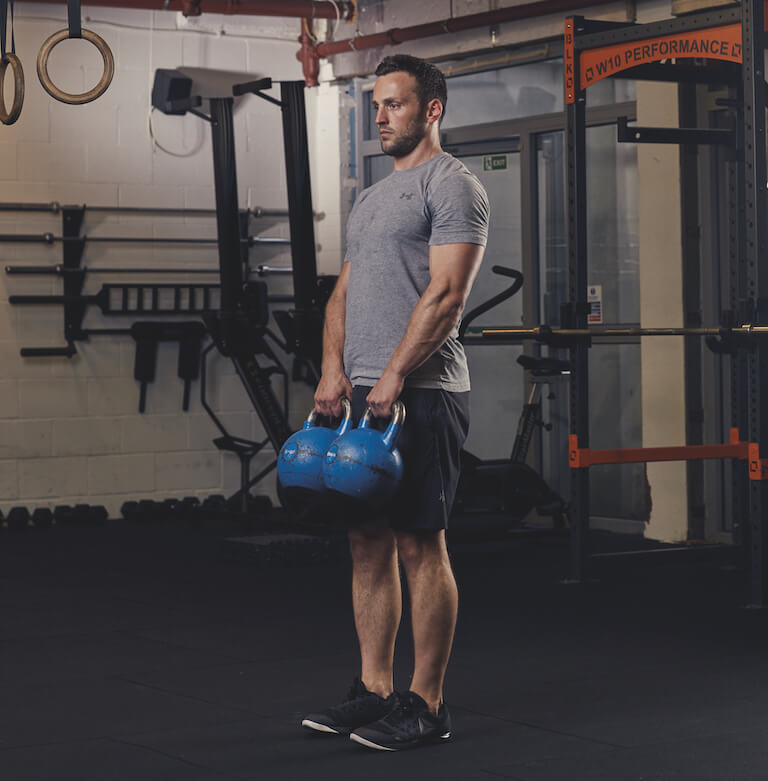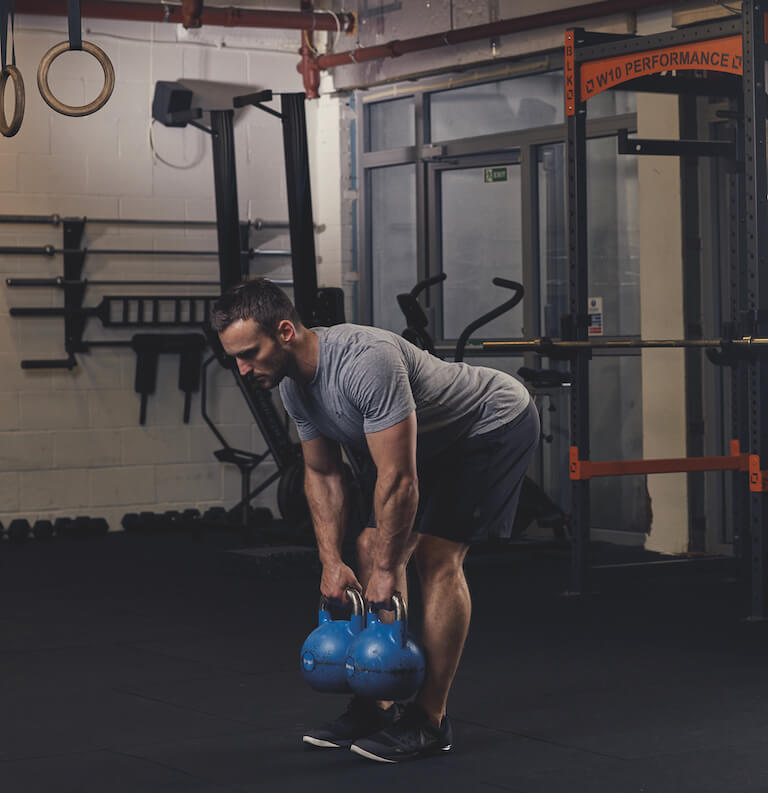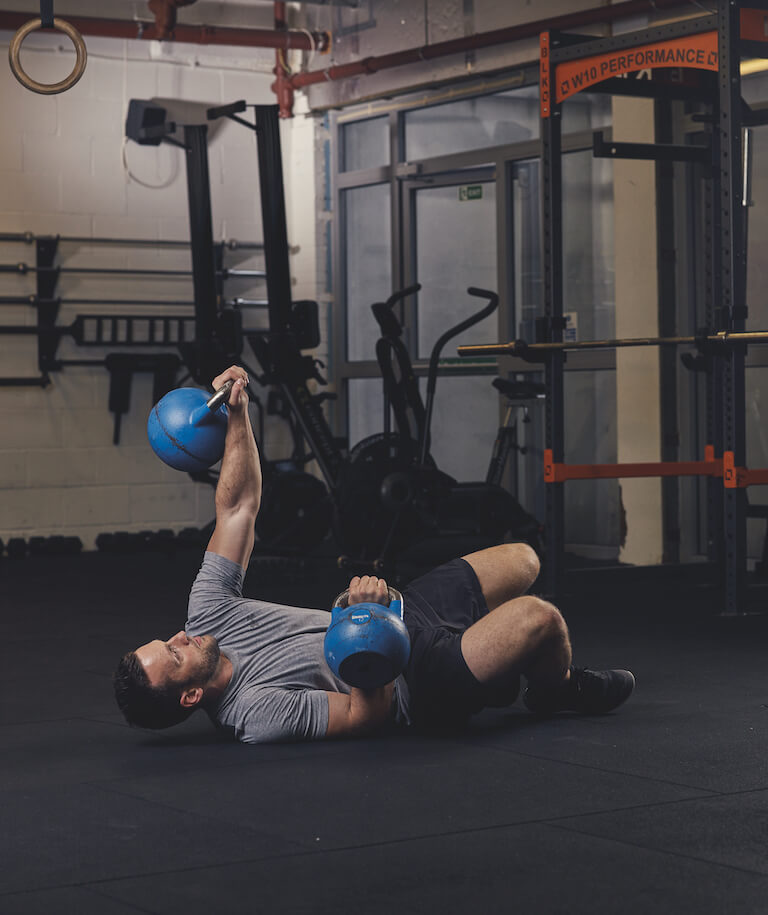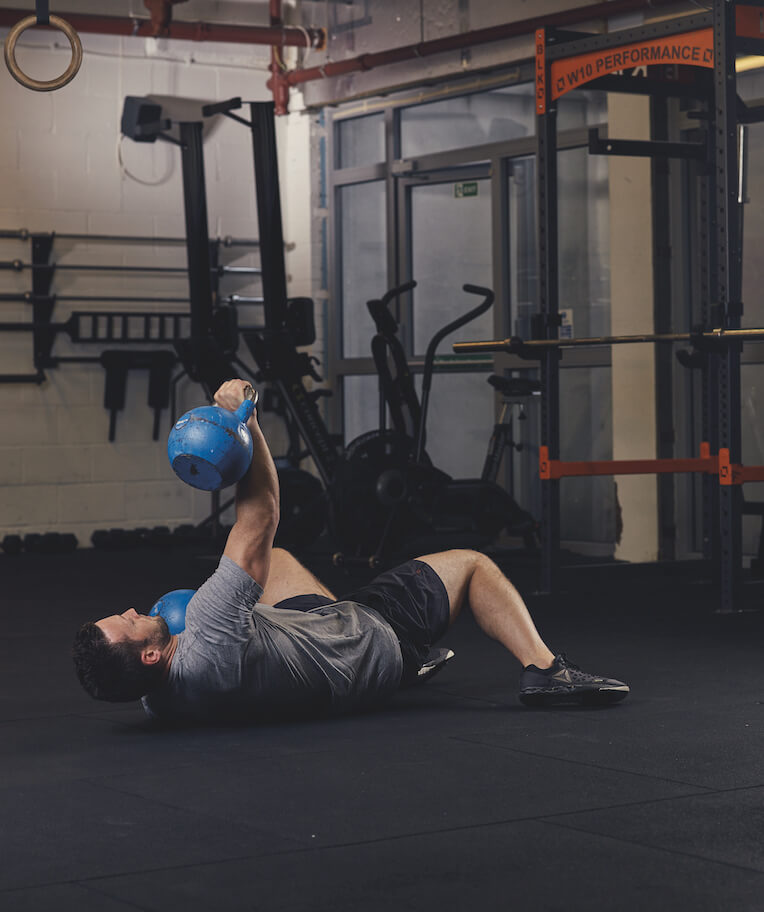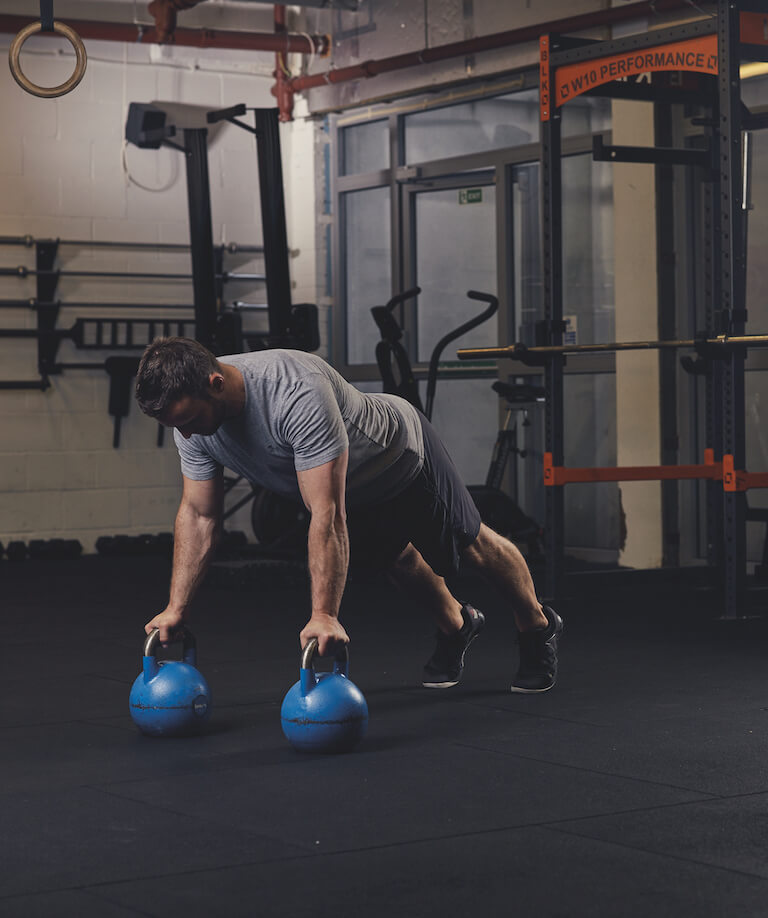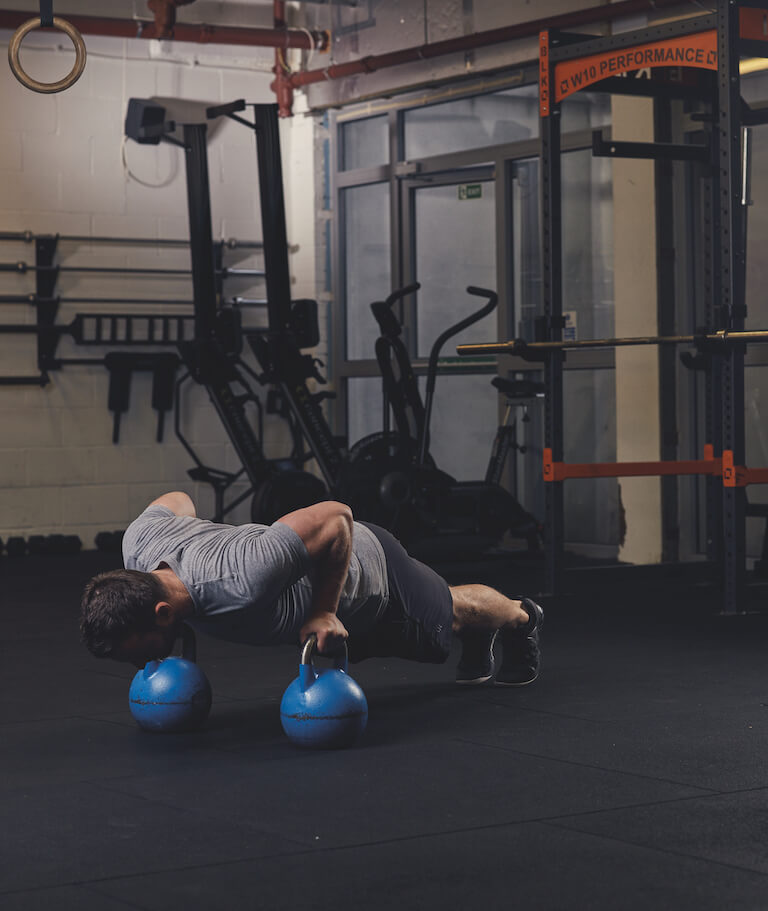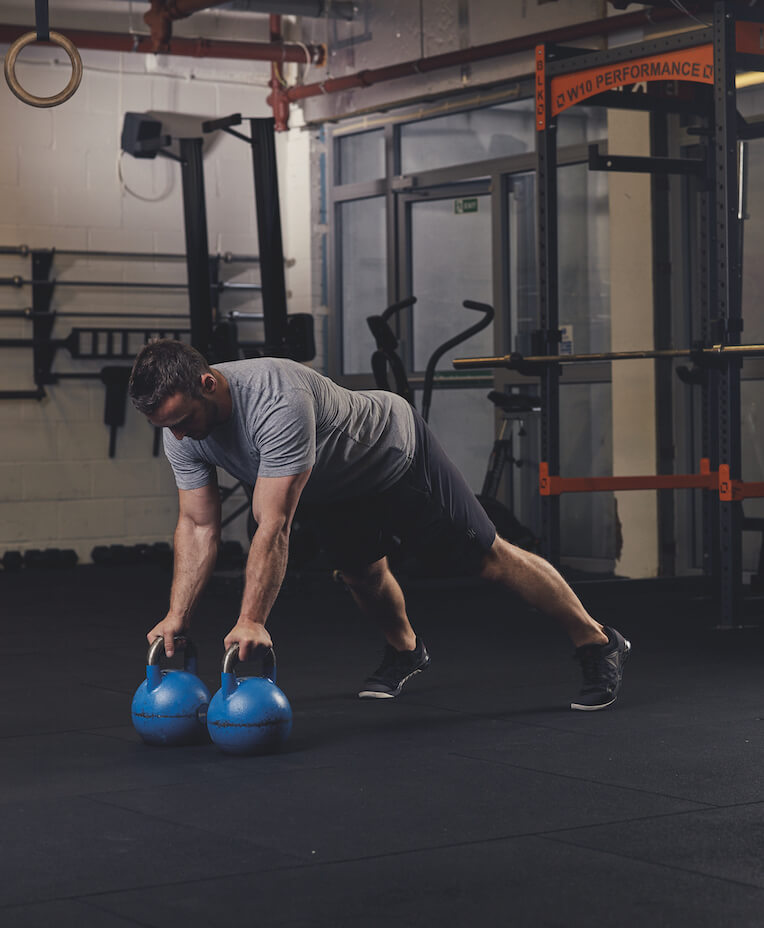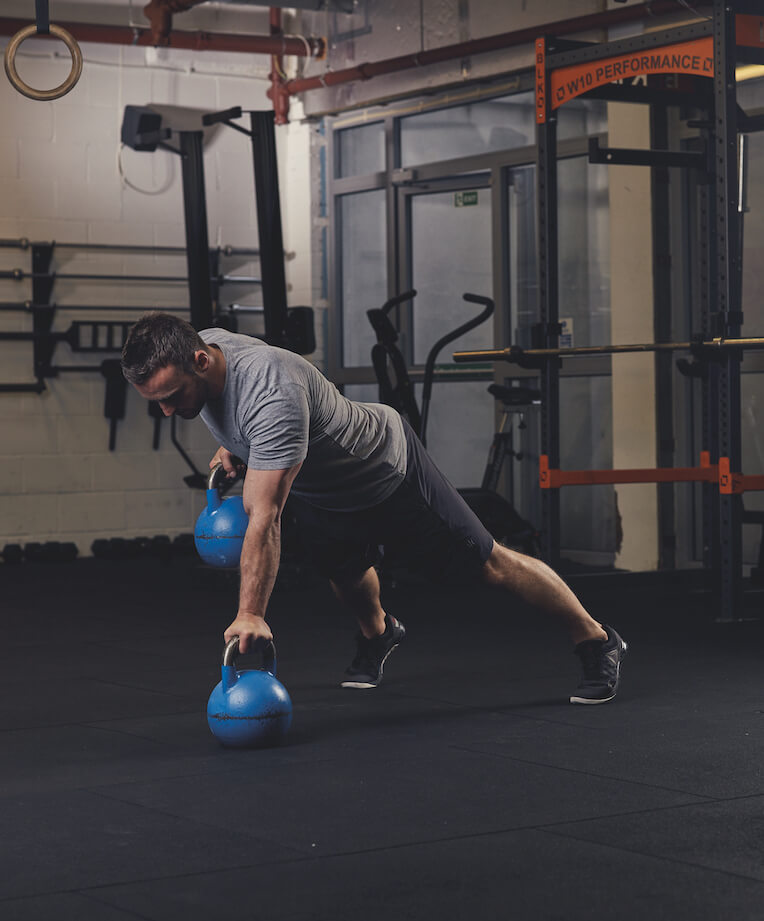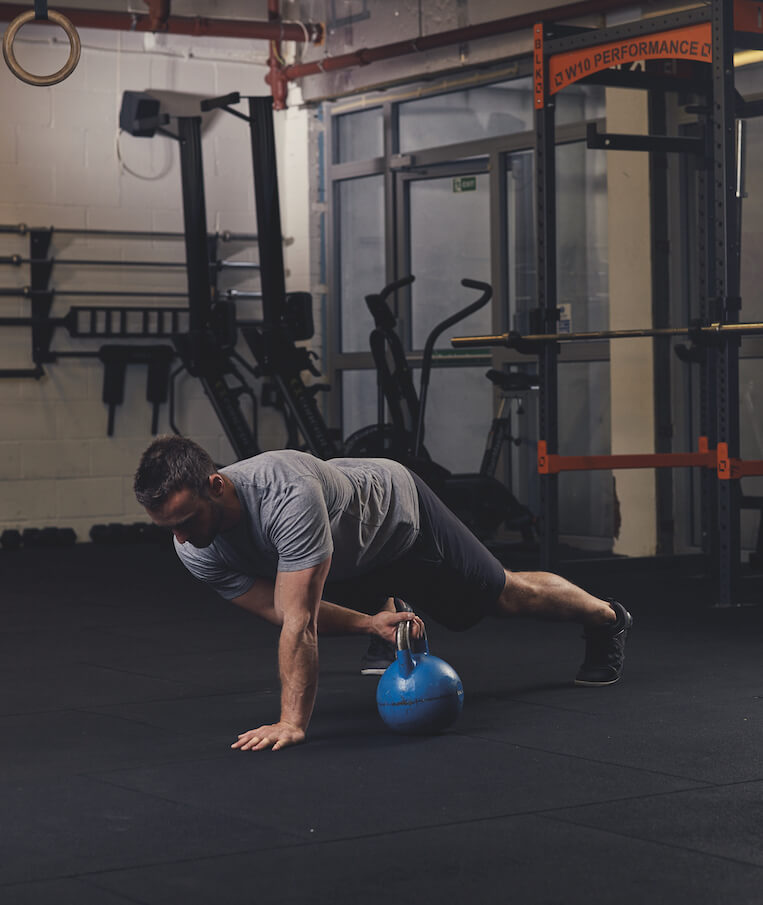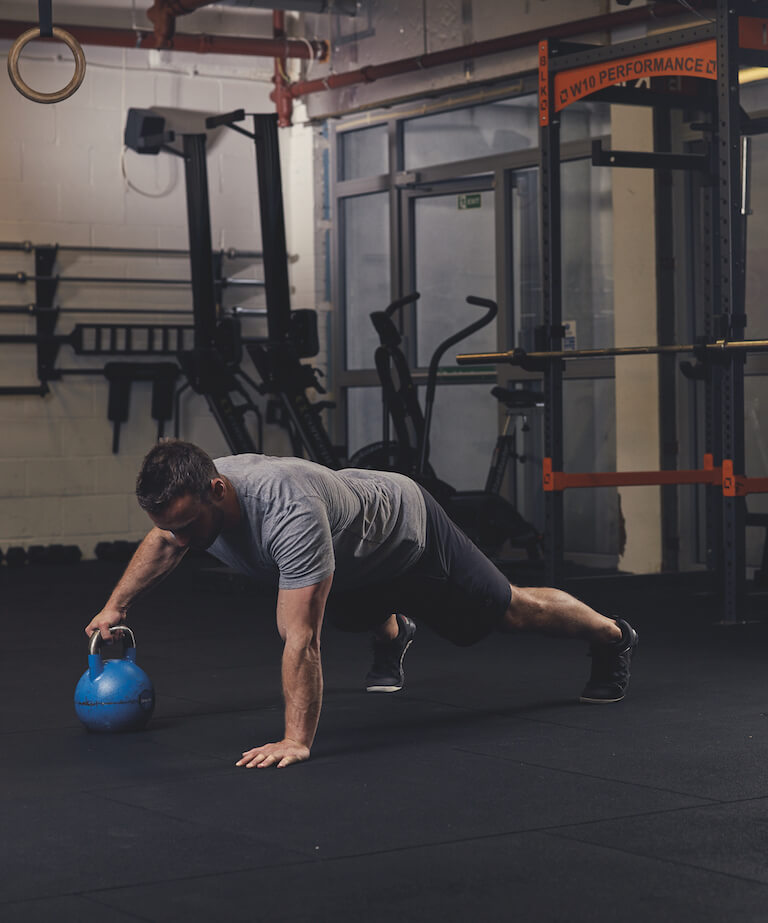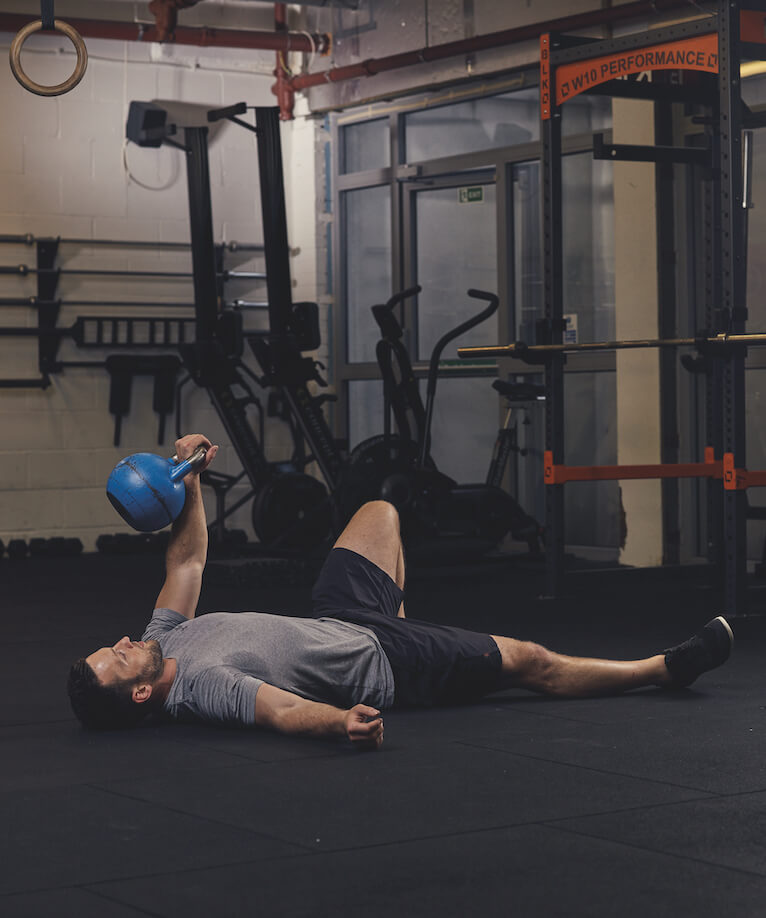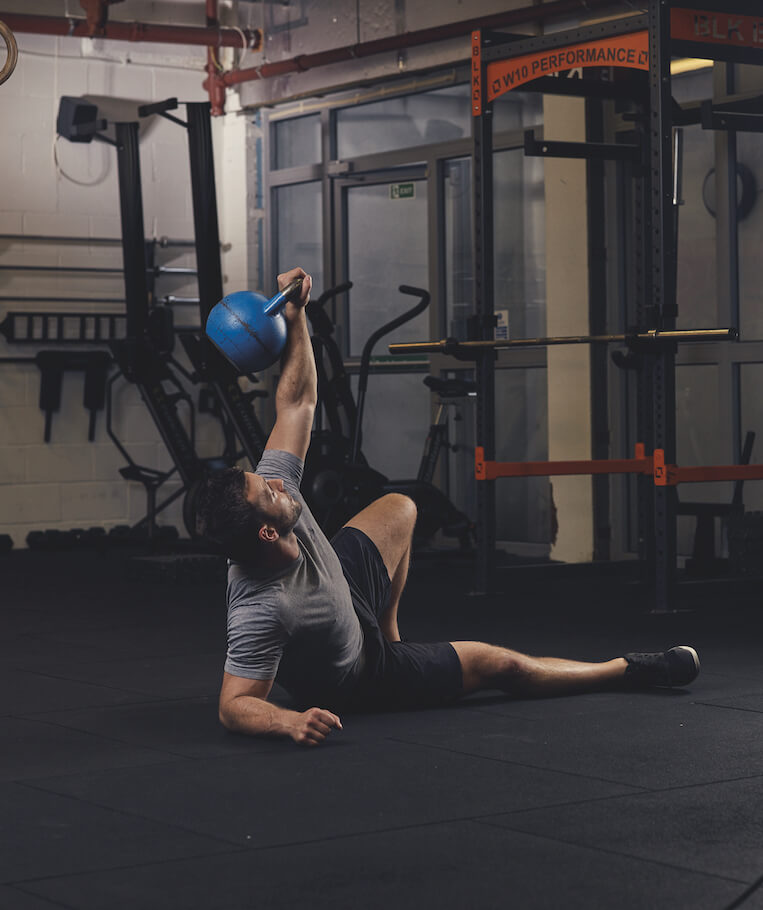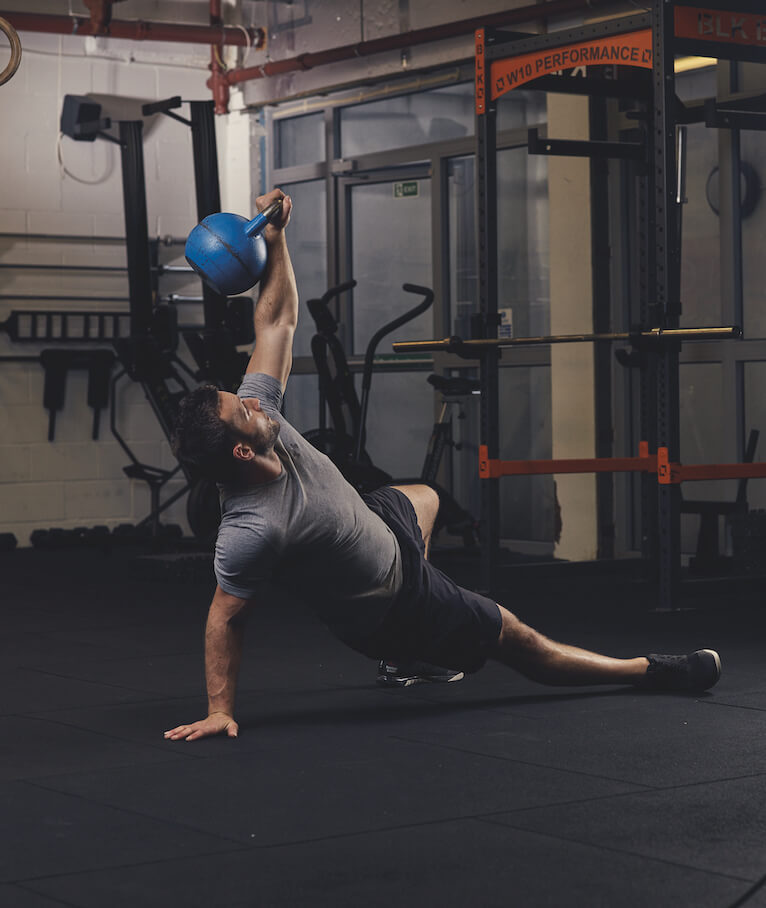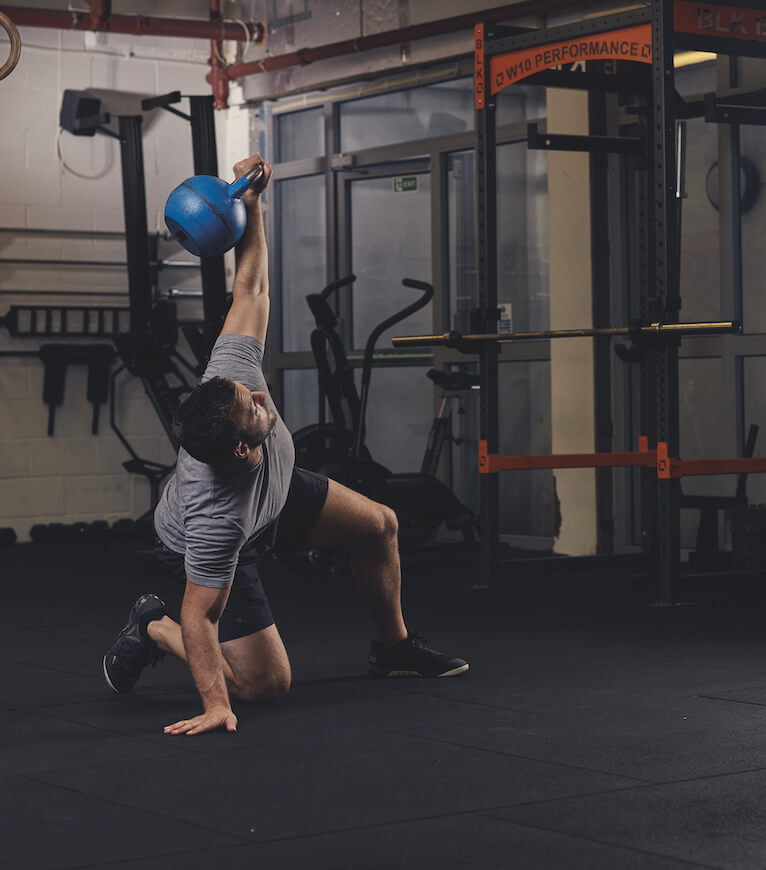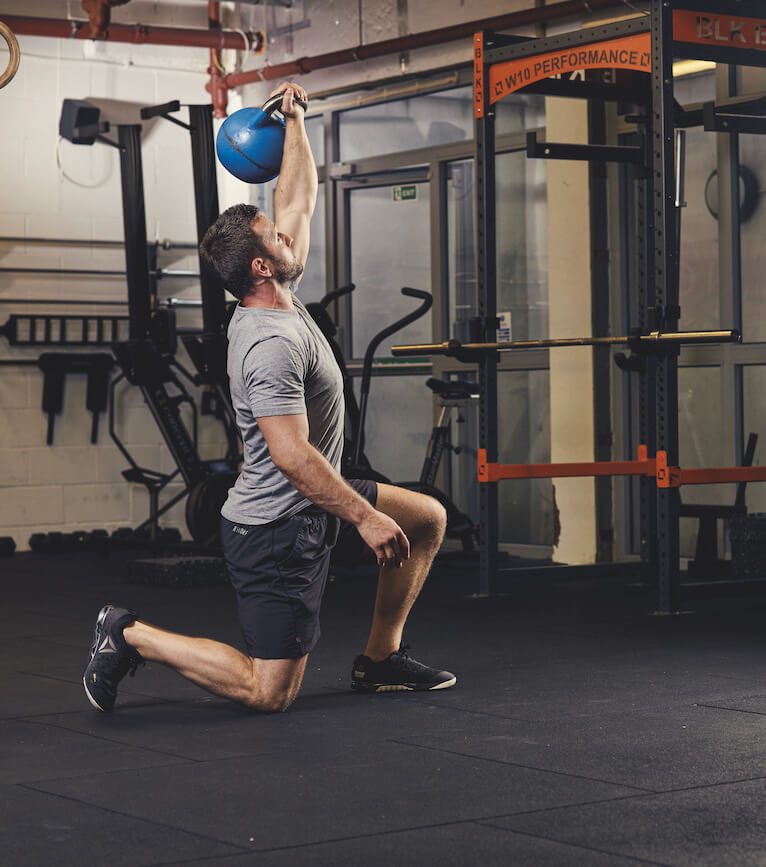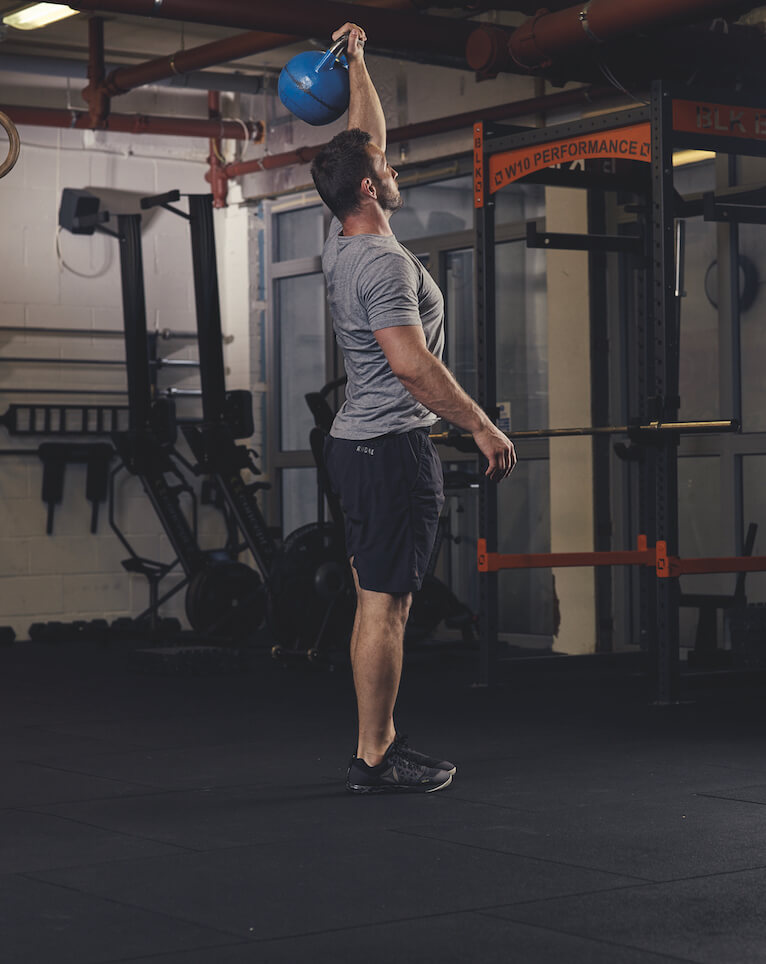Get ready to upgrade your workouts with our pick of the best kettlebell exercises for every body part…
The kettlebell is beginning to get the credit it deserves, and for good reason. Its top-mounted handle makes it the ideal tool for ballistic, swinging movements, giving workout options that are tough to replicate with dumbbells or a bar.
Because moves like the swing, snatch and clean use virtually every muscle, they can be done for low reps to build full-body explosiveness, or ultra-high reps (50 in a set isn’t uncommon) for fat burn and cardio.
But there’s more. Since the 1700s, farmers and strongmen have been using lifts like the windmill and bent-over press to show off their strength and coordination, and incorporating them into your routine will help you build physical powers you barely knew you had.
Want to get strong, explosive and lean? Discover the best kettlebell exercises for every body part.
23 best kettlebell exercises
- 1. Kettlebell swing
- 2. Single-arm kettlebell swing
- 3. Alternating kettlebell swing
- 4. Double kettlebell swing
- 5. Kettlebell clean
- 6. Kettlebell snatch
- 7. Kettlebell overhead press
- 8. Kettlebell bottoms-up press
- 9. Kettlebell lunge press
- 10. Kettlebell halo
- 11. Kettlebell windmill
- 12. Kettlebell side press
- 13. Kettlebell bent-over press
- 14. Kettlebell around the world
- 15. Double kettlebell squat
- 16. Kettlebell goblet squat
- 17. Double kettlebell thruster
- 18. Double kettlebell Romanian deadlift
- 19. Kettlebell rolling thunder
- 20. Kettlebell press-up
- 21. Kettlebell renegade row
- 22. Kettlebell plank pass
- 23. Kettlebell Turkish get-up
Keep reading for full instructions on how to perform the best kettlebell exercises.
Related: Best Dumbbell Exercises For Every Body Part
1. Kettlebell swing
Primary target: Glutes | Secondary target: Hamstrings
Benefits of the kettlebell swing:
This full-body move engages all the muscles of your posterior chain, but also teaches the explosiveness you need to do everything from throwing a punch to jumping onto a box, making it one of the best kettlebell exercises. Remember, it’s a swing and not a squat: you only need to bend your knees as much as you would before a jump.
How to do a kettlebell swing:
- Stand with your feet shoulder-width apart and push the kettlebell off your body to start the swing.
- As you lower, hinge at the hips by pushing your glutes back.
- When you feel a stretch in your hamstrings, drive your hips forward, swinging the kettlebell up.
- Don’t worry too much about how high the kettlebell gets – the snap at the hips and drive through the glutes is more important than air time.
2. Single-arm kettlebell swing
Primary target: Glutes | Secondary target: Hamstrings
Benefits of the single-arm kettlebell swing:
Swinging the kettlebell with one hand forces you to engage your core muscles to stay upright and in control, building strength through your obliques that will transfer to almost any sport. This is also a good way to ‘wake up’ your abs ahead of heavy moves like the deadlift or squat.
How to do a single-arm kettlebell swing:
- Swing the kettlebell between your legs with one hand, bending your knees slightly, then pop your hips forward to drive it up to around chest height, keeping your arms relaxed.
- Do all your reps on one side, then switch to the other.
Need a kettlebell? Discover the best men’s kettlebells for home workouts
3. Alternating kettlebell swing
Primary target: Glutes | Secondary target: Hamstrings
Benefits of the alternating kettlebell swing:
Building on the single-arm swing by switching hands mid-air will work your coordination and proprioception, making this one of the best kettlebell exercises to try. Once you’ve got the hang of it, you can even move into kettlebell ‘juggling’ (flipping the bell over before catching it) – but don’t run before you can walk.
How to do an alternating kettlebell swing:
- Swing the kettlebell between your legs with one hand, bending your knees slightly, then pop your hips forward to drive it up to chest height, keeping your arms relaxed.
- Switch hands in mid-air – but don’t let go of the kettlebell unless you’re confident you’ll catch it.
4. Double kettlebell swing
Primary target: Glutes | Secondary target: Hamstrings
Benefits of the double kettlebell swing:
If you’re aiming to build strength or power, but don’t have a heavy enough bell, using two kettlebells at once is a solid option. Swinging between your legs will give you better glute and posterior chain activation, but you can also take a narrow stance and swing outside your legs to build your hamstrings.
How to do a double kettlebell swing:
- Taking a wider stance than normal, swing the kettlebells between your legs with both hands, then pop your hips forward to drive them up to chest height, keeping your arms relaxed.
- You’ll need to maintain a wide stance, so the weights don’t collide.
5. Kettlebell clean
Primary target: Hamstrings | Secondary target: Traps
Benefits of the kettlebell clean:
As well as being slightly less technical to learn than the barbell power clean, the kettlebell clean is one of the best exercises for teaching what some coaches call ‘steering strength’: the ability to redirect a heavy object while it’s moving. This will build explosiveness through your posterior chain, while teaching you to deal with impact in a way the swing doesn’t via the rack-position ‘catch’.
How to do a kettlebell clean:
- Swing the kettlebell upward with a pop from your hips.
- Bend your knees slightly to help with the catch – the kettlebell doesn’t have to go above chest height.
- As it moves upwards, bend your elbow and let the handle slide from your fingers down into the base of your palm.
- When you rack the kettlebell, keep your elbow tucked into your body.
- Swing the kettlebell back down and go straight into the next rep.
6. Kettlebell snatch
Primary target: Glutes and hamstrings
Benefits of the kettlebell snatch:
Though it’s tricky to master, the snatch is one of the best kettlebell exercises out there. It’s a full-body test of coordination that demands savage lung power when done for high reps, which is why it’s one of the two key moves in traditional kettlebell competitions. The gold standard is 100 reps in ten minutes – doing it with a 16kg kettlebell is respectable, a 20kg is pretty good and a 24kg is elite. There’s a target for you.
How to do a kettlebell snatch:
- Swing the kettlebell between your legs with one hand, then pop your hips forward to drive it upwards.
- When it gets to chest-level, punch your hand forward and catch it on your forearm, bringing it overhead – done properly and with enough force, it should land softly and not hurt.
- Flip it back down and swap hands for the next rep.
7. Kettlebell overhead press
Primary target: Shoulders | Secondary target: Obliques
Benefits of the kettlebell overhead press:
As well as allowing your shoulder joint to rotate more naturally than a barbell press, the one-sided kettlebell version of the press brings your obliques into play, forcing them to work to stabilise your torso. Working your shoulders unilaterally should also fix any imbalances.
How to do a kettlebell overhead press:
- From the rack position, press the kettlebell overhead, keeping the bell resting against your forearm.
- Lower the bell under control, pausing at the bottom of the move with the bell resting behind your shoulder.
- Finish all your reps on one side, then switch to the other.
8. Kettlebell bottoms-up press
Primary target: Shoulders | Secondary target: Forearms
Benefits of the kettlebell bottoms-up press:
It’s more than a circus trick – this move will work all the stabiliser muscles around your shoulder girdle, keeping your rotator cuffs injury-free. It’ll also work your grip and forearms, and it may even help your chin ups. Use it as a warm-up on shoulders day.
How to do a kettlebell bottoms-up press:
- Grip the kettlebell handle hard with the base facing the ceiling.
- Brace your core to maintain stability.
- Press the weight overhead, then lower with control.
9. Kettlebell lunge press
Primary target: Quads and shoulders
Benefits of the kettlebell lunge press:
This move builds core strength by forcing your body to stabilise the kettlebell overhead, but also improves coordination and proprioception.
How to do a kettlebell lunge press:
- Holding the kettlebell in the rack position, lunge forward on the opposite leg as you press it overhead.
- Pause at the bottom of the move with the kettlebell overhead, then return to the start position.
10. Kettlebell halo
Primary target: Obliques | Secondary target: Shoulders
Benefits of the kettlebell halo:
This move engages your shoulders and core, making it the ideal warm-up when done light – or a fat-burning finisher when used together with a few of the other best kettlebell exercises.
How to do a kettlebell halo:
- Holding the kettlebell by the handle, rotate it around and behind your head, bending your elbows as it passes behind you for the maximum possible range of motion.
- You’ll feel this one in your obliques if you do it right.
11. Kettlebell windmill
Primary target: Obliques | Secondary target: Hamstrings
Benefits of the kettlebell windmill:
This move targets your obliques and works on your full-body coordination, but it’s also a great dynamic hamstring stretch – ideal for warming up on a big deadlift day.
How to do a kettlebell windmill:
- Hold a kettlebell by the horns.
- Clean the kettlebell to your shoulder by extending through the legs and hips as you pull the kettlebell towards your shoulder.
- Rotate your wrist as you do so, so that the palm faces forward.
- Press the kettlebell over your head, locking out your arm.
- Initiate the windmill by angling both feet 45 degrees away from the arm holding the kettlebell.
- Push the hip under the kettlebell back, extend your leg as tall as it will go and keep a bent knee on your front leg.
- Use your free arm as a guide, moving your hand down your straight leg as you lower as far as mobility will allow – do not compromise form.
- Reverse the movement to return to standing.
12. Kettlebell side press
Primary target: Shoulders | Secondary target: Obliques
Benefits of the kettlebell side press:
This time-honoured lift allows you to handle more weight than a traditional overhead press, as your press should be stronger out to the side than straight overhead. One of the best kettlebell exercises, it’ll also work your core.
How to do a kettlebell side press:
- Take a fairly wide stance, with your feet pointed in the direction you’ll be leaning.
- As you begin the press, bend to the side away from your pressing arm.
- How much you bend will depend on how heavy the weight is.
- Once your arm is locked out, straighten up into a standing position.
13. Kettlebell bent-over press
Primary target: Shoulders | Secondary target: Obliques
Benefits of the kettlebell bent-over press:
This might look similar to the side press, but here the idea is not to press the weight but to support it as you get underneath it. One of the best kettlebell exercises, the bent-over press was once practised as a feat of strength and celebrated strongman Arthur Saxon used to do it with 167kg.
How to do a kettlebell bent-over press:
- Start in a similar position to the side press, keeping your elbow on your hip.
- Bend away from the weight while you keep your upper arm in contact with your body.
- Then start pressing, and keep lowering your torso until your arm has straightened all the way.
14. Kettlebell around the world
Primary target: Obliques | Secondary target: Forearms
Benefits of the kettlebell around the world:
Done at speed, this move gets all your core muscles firing, making it a good warm-up (done light) or a good finisher (done heavy, in conjunction with other moves). It’ll also work your grip, if you keep at it for a while.
How to do the kettlebell around the world:
- Stand tall with the kettlebell in one hand, then swing it around your body, switching hands as it passes in front of and behind you.
15. Double kettlebell squat
Primary target: Quads and glutes
Benefits of the double kettlebell squat:
Using a pair of kettlebells for a ‘rack’ squat enables you to be more self-correcting than the traditional barbell back squat. You won’t be tempted to lean forward, and holding the bells on your forearms will allow you to handle decent weight for moderate reps.
How to do a double kettlebell squat:
- Stand with your feet shoulder-width apart and clean both kettlebells into the rack position, the bells resting on your forearms.
- Squat down as low as you can, pausing at the bottom.
- Drive back up through your heels.
16. Kettlebell goblet squat
Primary target: Quads and glutes
Benefits of the kettlebell goblet squat:
It’s the most idiot-proof version of the squat. If you focus on touching your elbows to your knees, it will build the mobility you need for full-depth squatting, as well as flexibility in your groin and ankles. Use it as a warm-up on your squat days.
How to do a kettlebell goblet squat:
- Hold your kettlebell handle-down with both hands around the bell, and squat down with your back straight and chest up.
- Descend until your elbows touch the insides of your knees, then put your weight on your heels as you stand back up.
17. Double kettlebell thruster
Primary target: Quads, glutes and shoulders
Benefits of the double kettlebell thruster:
This full-body move demands coordination, strength, and – if you do it for reps – a fair amount of cardio. It’s similar to the barbell thruster but, because you’re doing it with two bells, better for working on imbalances.
How to do a double kettlebell thruster:
- Clean the kettlebells into the rack position.
- Do a squat, then drive upwards quickly, using the momentum to help you press the weights overhead.
- Keep your torso braced during the squat, loosen up during the drive, then brace again as you lock out the kettlebells at the top of the move.
18. Double kettlebell Romanian deadlift
Primary target: Hamstrings | Secondary target: Glutes
Benefits of the double kettlebell Romanian deadlift:
As well as providing a much-needed (for most people) hamstring stretch, this two-kettlebell move adds an element of core-strengthening instability.
How to do a double kettlebell Romanian deadlift:
- Holding a pair of kettlebells and keeping a slight bend in your knees, bend forward at the hips (keeping your back flat) until you feel the stretch in your hamstrings.
- Straighten up.
19. Kettlebell rolling thunder
Primary target: Obliques | Secondary target: Chest and triceps
Benefits of the kettlebell rolling thunder:
This move uses full-body coordination while forcing your core to work under load, building real-world strength that’ll be useful in anything from Brazilian jiu jitsu to surfing. It will also give your shoulders some much-needed stability work.
How to do a kettlebell rolling thunder:
- Lie with a kettlebell in each hand, keeping your knees bent.
- Roll to one side as you press one kettlebell into the air, bringing your shoulder off the ground.
- As you lower the first kettlebell, roll over to press the other one.
20. Kettlebell press-up
Primary target: Chest | Secondary target: Triceps
Benefits of the kettlebell press-up:
By doing a press-up on kettlebells, you won’t just have to stay stable and controlled. You will also be able to descend further than you would on the floor, increasing the stretch across your pecs.
How to do a kettlebell press-up:
- Hold the handles of the kettlebells, keeping your body in a straight line.
- Descend into a press-up, stopping when your thumbs touch your armpits.
- Grip the handles hard as you press back up.
21. Kettlebell renegade row
Primary target: Core | Secondary target: Lats
Benefits of the kettlebell renegade row:
This move combines stability with pulling, so it will build your core as well as your back. It’s tempting to twist to one side as the reps get tougher, but the more you can stay parallel, the harder you’ll work your abs.
How to do a kettlebell renegade row:
- Do a press-up on the kettlebells, then – in the top position – lift one dumbbell, lower it, then lift the other.
- Raise them to your armpits, trying to keep your body parallel to the floor.
22. Kettlebell plank pass
Primary target: Abs | Secondary target: Obliques
Benefits of the kettlebell plank pass:
Once you can do the plank for at least two minutes, this variation adds instability and a twisting motion, hitting your core from every angle. You can also effectively do it with a sandbag or a dumbbell.
How to do the kettlebell plank pass:
- Get into a straight-arm plank position with the kettlebell underneath you.
- Grasp it with one hand, bring it across your body and put it down, then change hands and replace it on the other side.
- Keep your torso as parallel to the ground as possible.
23. Kettlebell Turkish get-up
Primary target: Full body
Benefits of the kettlebell Turkish get-up:
This move builds strength and balance through your whole body, as well as teaching you to create tension and stability in a variety of positions. With lighter weights you might get away with bad form, but as you go heavier you’ll need to keep the weight directly overhead, allowing you to lift it efficiently. Start with a shoe balanced on top of your fist to teach yourself the form, then progress to a kettlebell.
How to do a kettlebell Turkish get-up:
- Lie on your back with a kettlebell in one hand. Roll slightly away from it as you press it upwards, coming up to support yourself on your opposite forearm.
- From here, plant the foot on the same side as the kettlebell on the floor, and use it to take your weight as you sweep your other leg underneath you into a half-kneeling position.
- Stand up with the kettlebell overhead.
- Reverse the whole movement to go back to the floor.
Photography: Glen Burrows
RELATED CONTENT:
- How to get more from your kettlebell workouts
- The dumbbell and kettlebell workout for full-body muscle
- Try this two-move home kettlebell workout for fat loss
Head over to our sister site, Women’s Fitness UK, for a full-body kettlebell workout.
The post Kettlebell Exercises For Every Body Part appeared first on MensFitness.
[ad_2]Article link
-
Muscle Builder
Optimum Nutrition Gold Standard 100% Whey Protein Powder, Double Rich Chocolate
$37.32 -
Libido Enhancers
Horny Goat Weed by Natures Craft
Original price was: $50.00.$17.55Current price is: $17.55.

